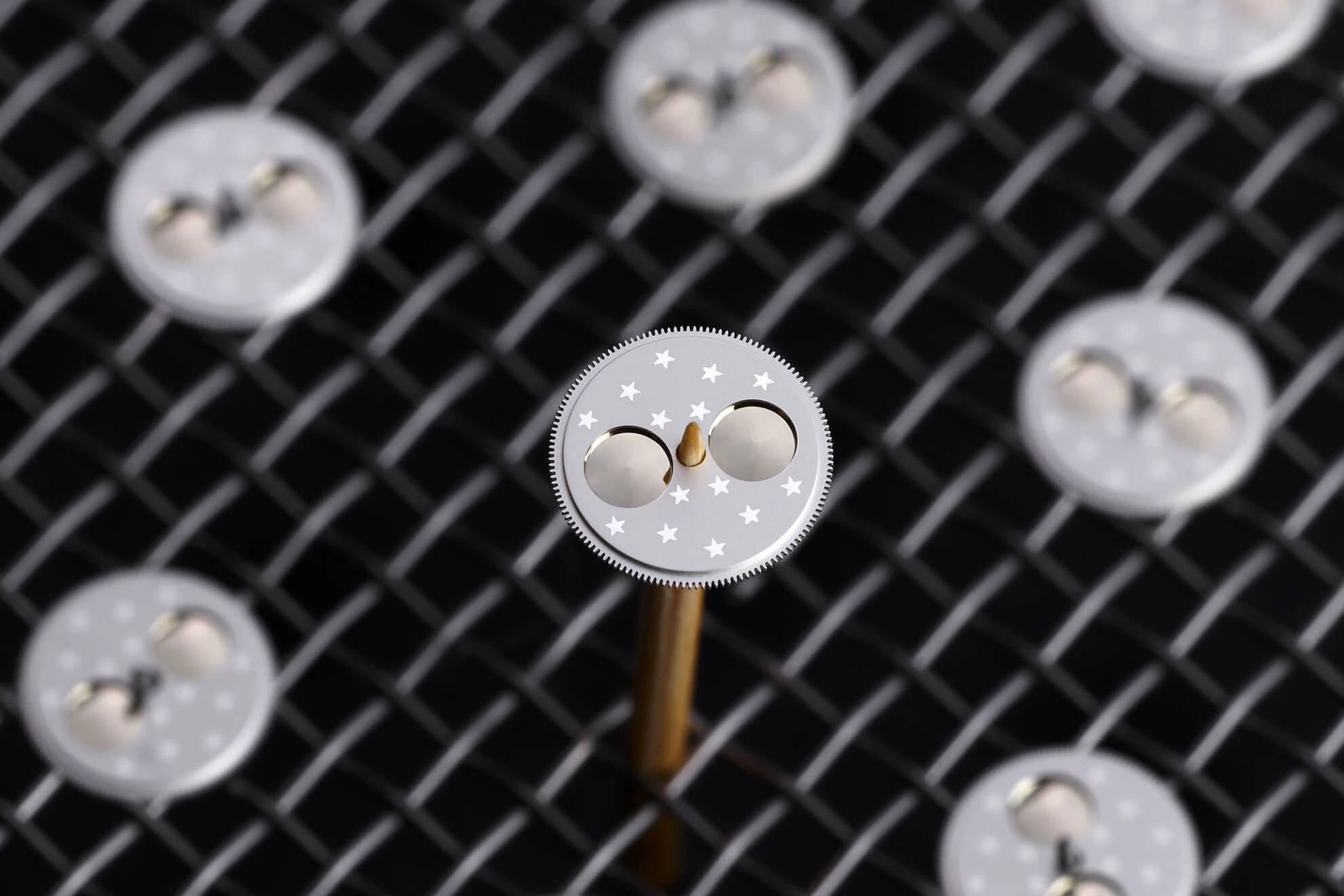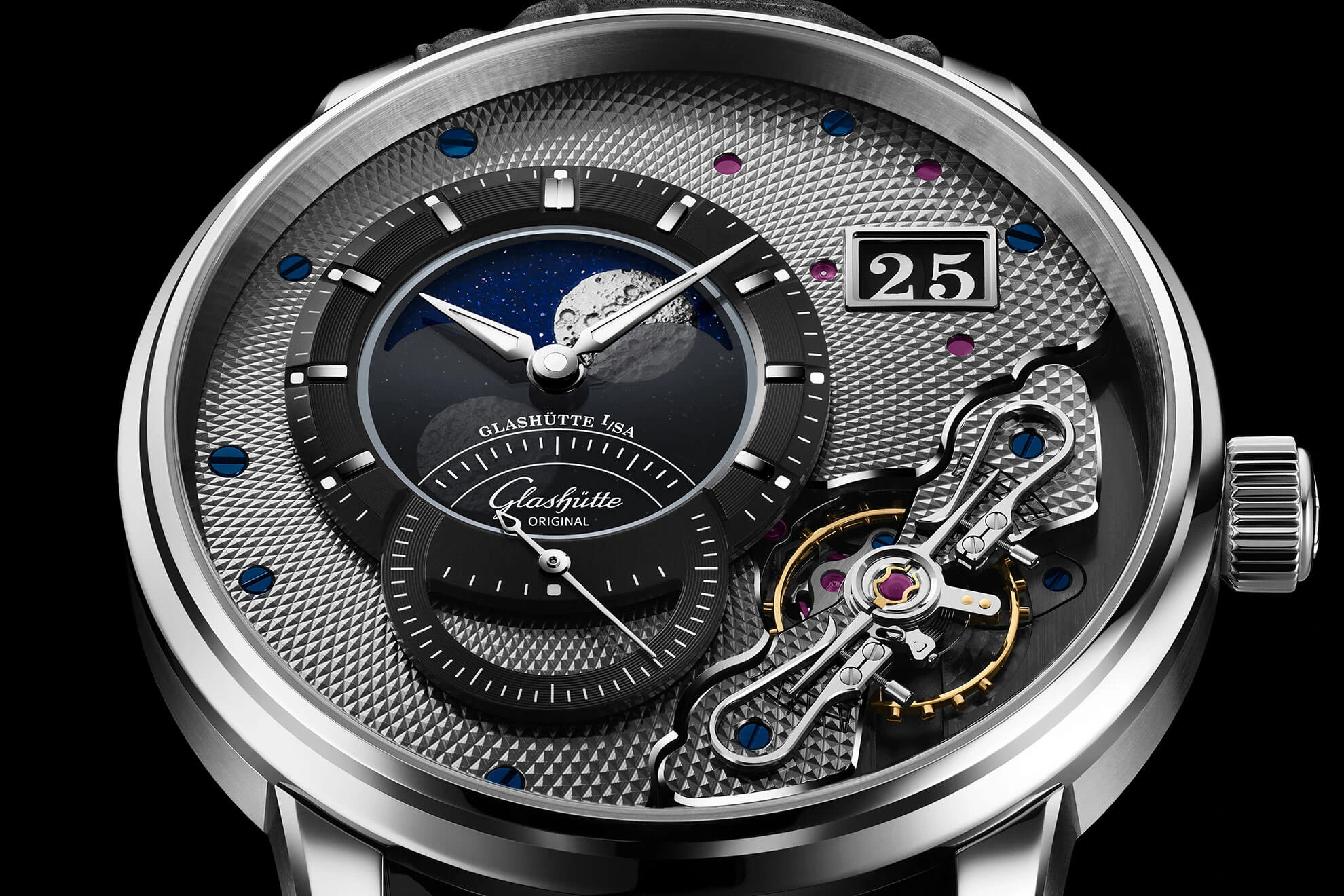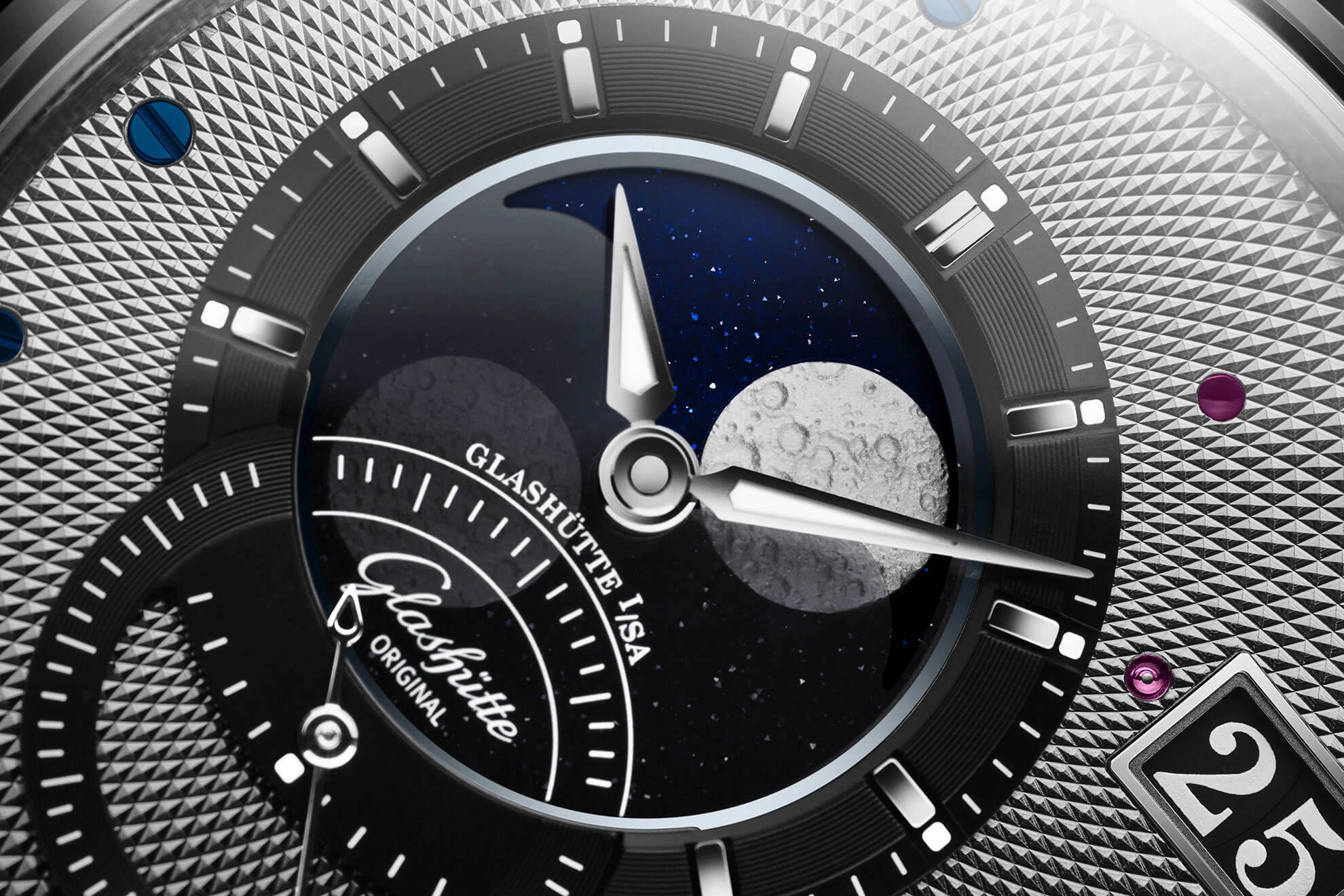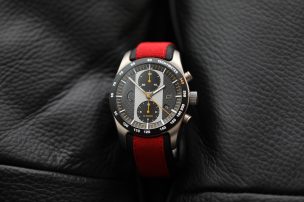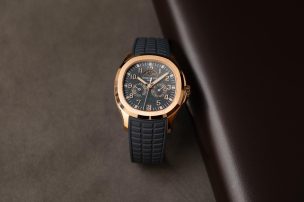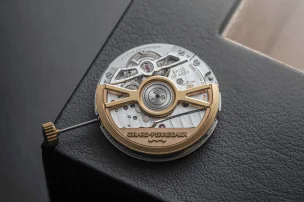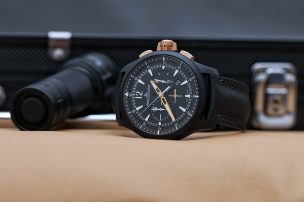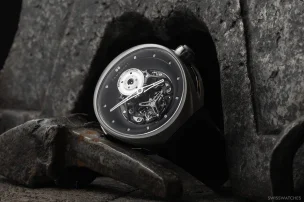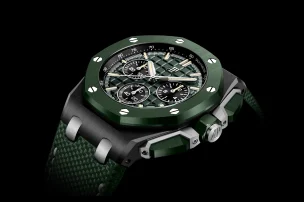
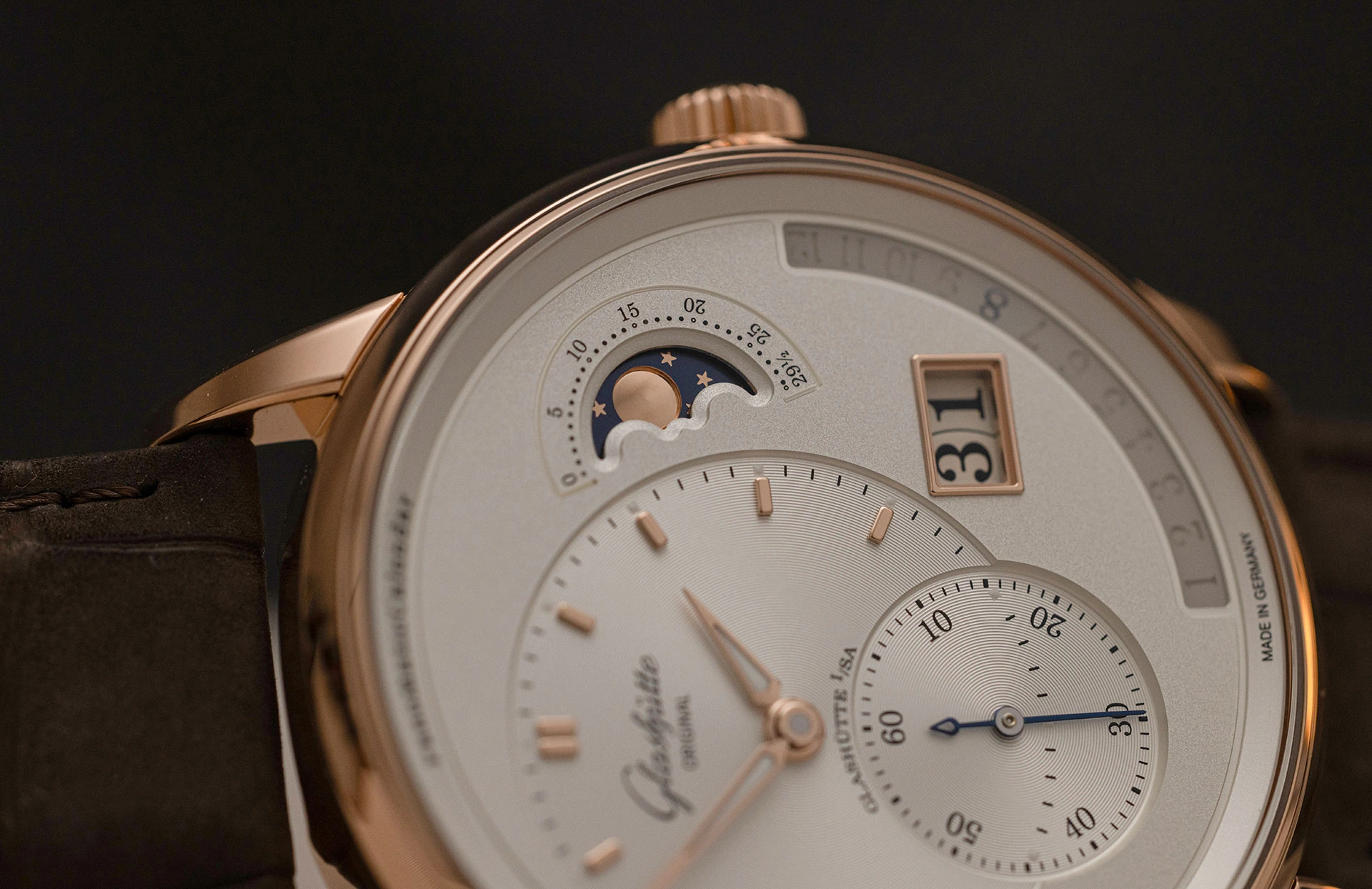
Glashütte Original and the Fascination of Moonphase Watches
In 1968, the Apollo 8 mission transmitted images to Earth that were so impressive that they triggered a metaphysical shiver across the globe. ‘Earthrise’, the image shot on 24 December 1968 during the fourth of ten planned orbits of the moon, not only made it clear that we humans had set foot on another celestial body for the first time – it also provided a new perspective that mankind had never seen before. For the first time, we took the view of the moon, which has always turned the same side towards us for billions of years, at a distance of 384,400 kilometres.
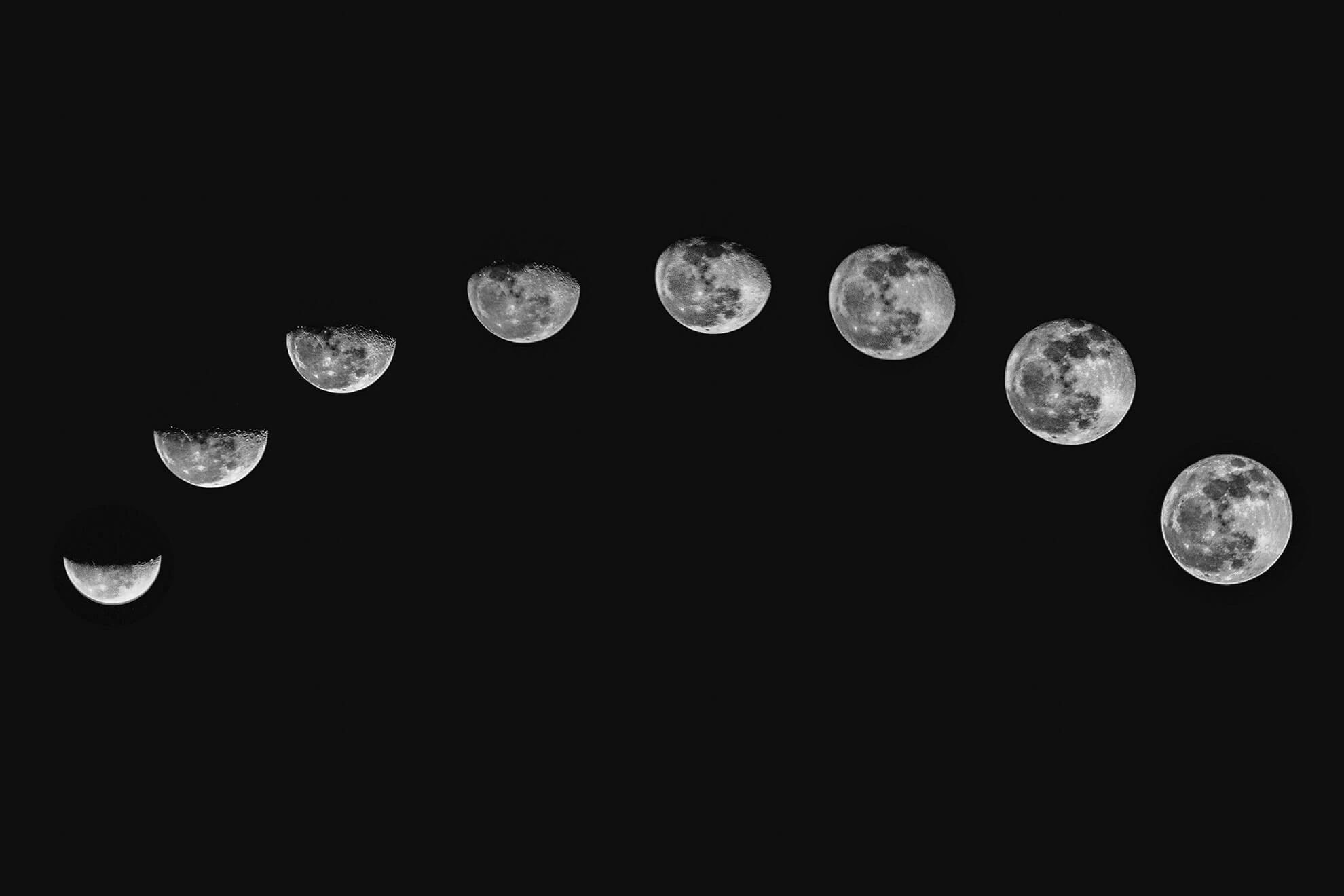

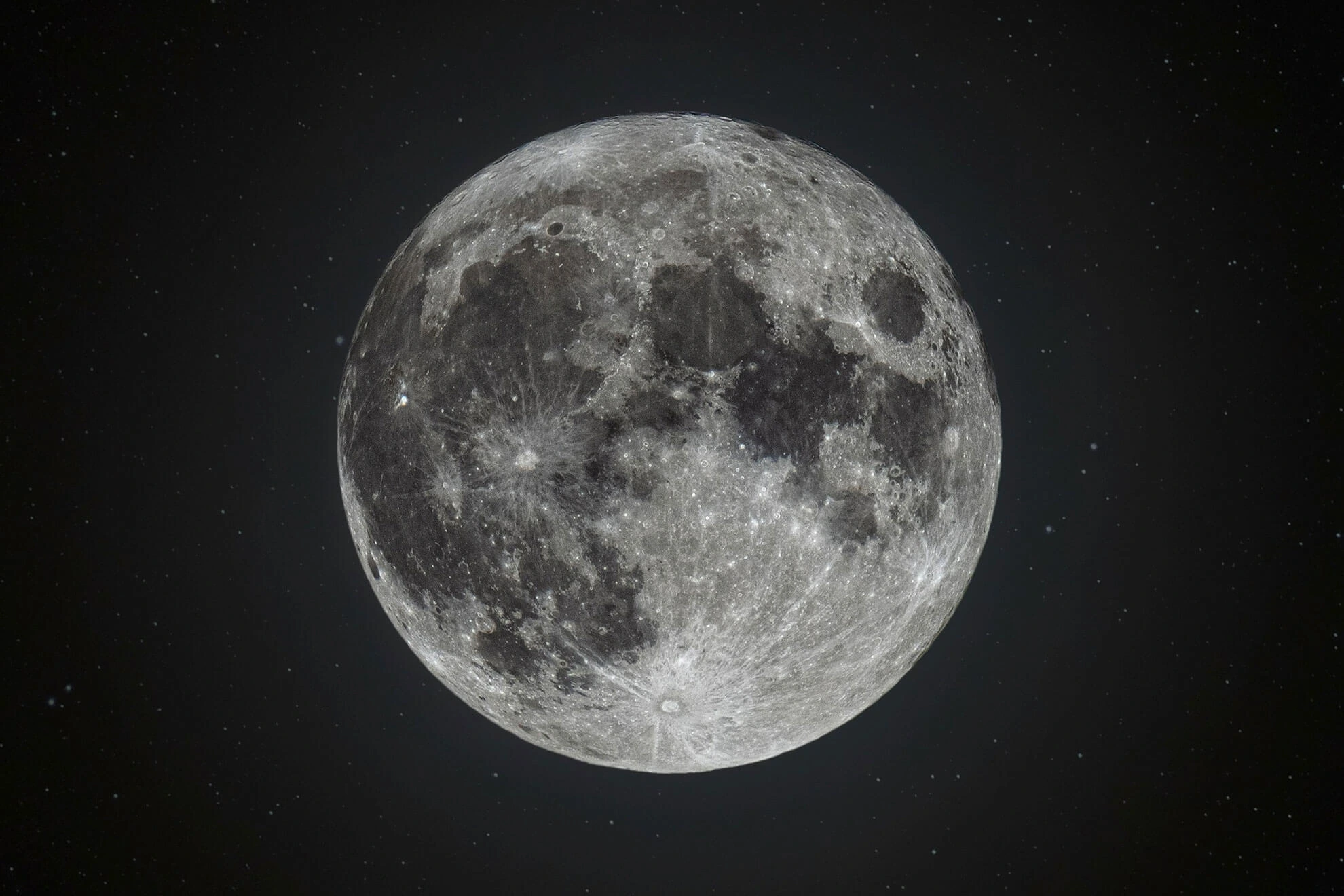
But the effect that the moon has upon both us and the earth is nothing new: ever since we humans first turned our gaze to the heavens, the most conspicuous celestial body has been the subject of legends and myths and served as the basis for the development of early calendars, particularly through the observation of its phases. It is these phases that inspired the world of watchmaking to create a complication that stands out from purely informative displays and lends the dial a poetic depth: the moonphase display complication, which visualises the movement of the moon around the earth.
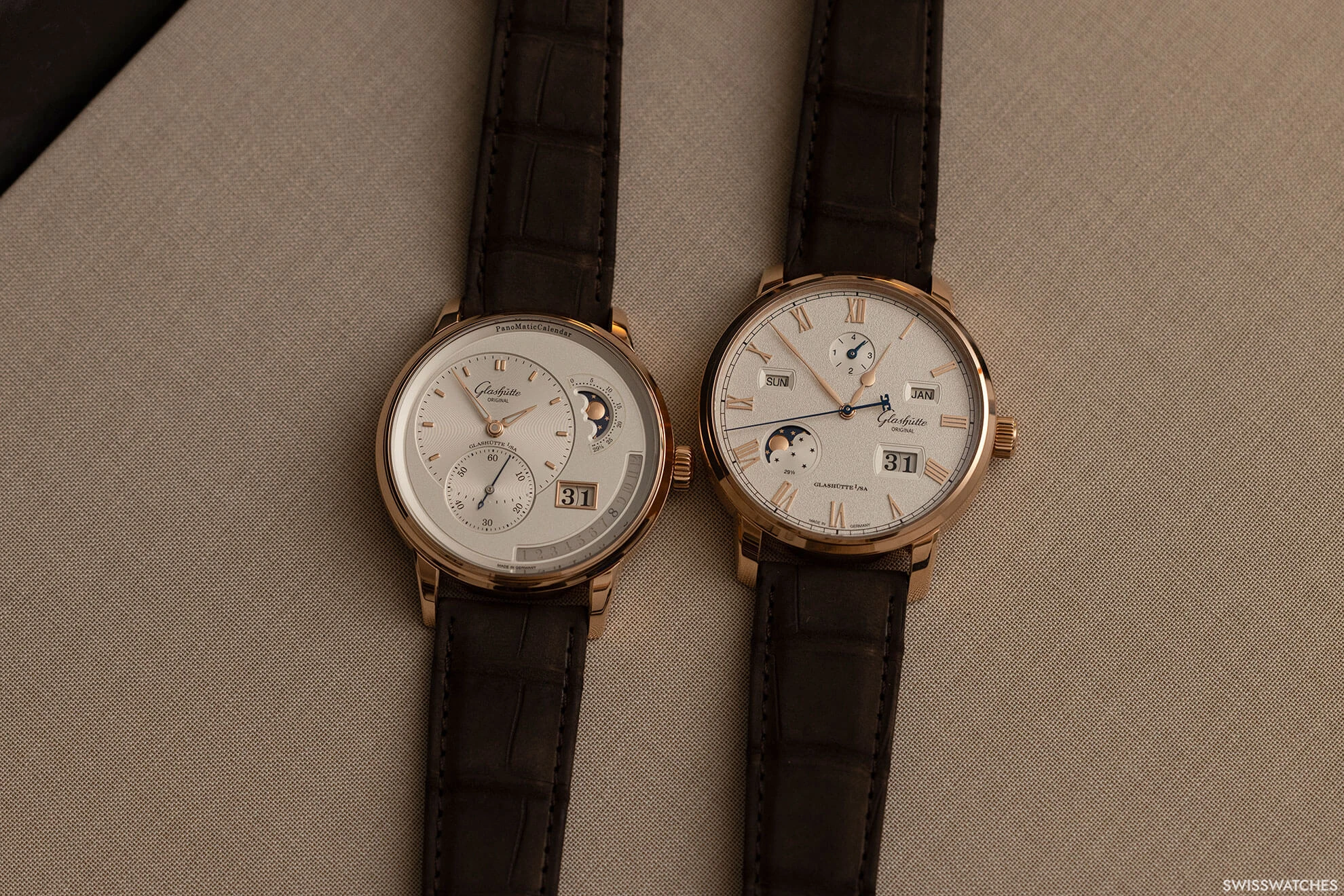
One brand that gives this function a special place in its portfolio is Glashütte Original. As one of the most renowned manufactures from the watchmaking town of Glashütte in Saxony, few produce such elegant representations of this complication. In this article, we will take a closer look at which of its models stand out in particular and how its fascination with the moonphase display comes to life through its watches.
The moonphase display: Astronomy and watchmaking in harmony
Before we look at how the moonphase indicator works, it is important to take a closer look at the moon and its phases. The moonphase cycle, which lasts approximately 29.5 days (29 days, 12 hours and 43 minutes), begins with the new moon as the starting point. From there, the moon passes through the various phases in its orbit: the waxing crescent moon, the waxing half moon and the three-quarter moon, until it finally appears as a full moon. It then gradually loses its light – through the phases of the new three-quarter moon, the waning crescent moon and the waning crescent moon – and finally returns to the new moon.
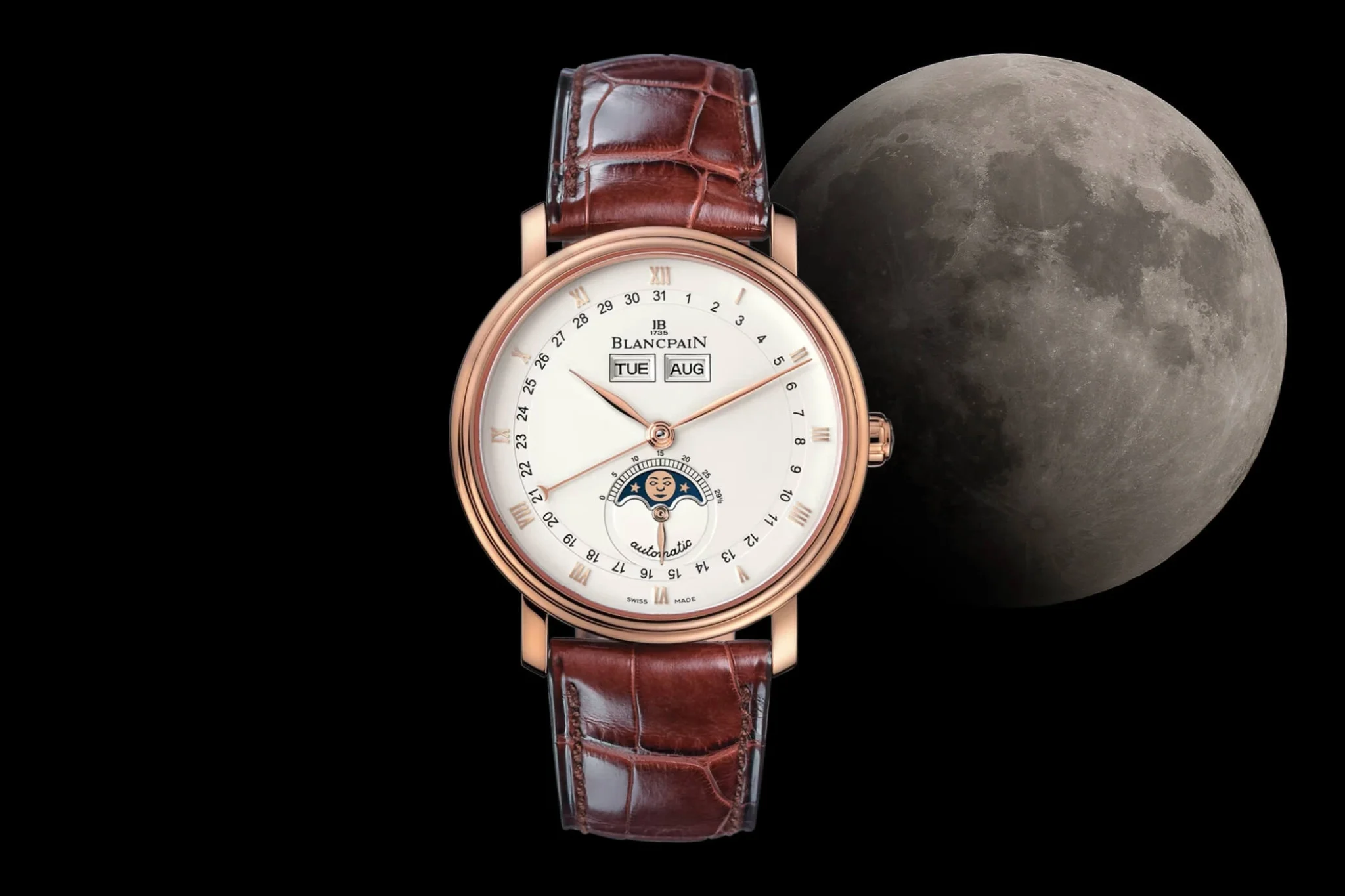
Blancpain Villeret Quantième Complet (Ref. 6263-3642-55)
The Villeret Quantième Complet (Ref. 6263-3642-55) by Blancpain was a watch that played a key role in popularising the moon’s changing light patterns in watchmaking. This watch is credited with bringing about the industry-wide reintroduction of the moonphase, which had virtually disappeared from the scene after many manufacturers – under pressure from quartz competition – had to cut costs. The serene smile on the moon on the full calendar watch was a catalyst in allowing the watchmaking world to rediscover the horological finesse of the moonphase.
How does the Glashütte Original moonphase display work?
The Glashütte Original brand, whose origins date back to 1845, introduced its first moonphase watches in 1997 as part of its return to haute horlogerie. These first watches, such as the 1845 Klassik Perpetual Calendar or the Julius Assmann Rotating Geared Watch, laid the foundations for a complication that is now an integral part of the brand’s portfolio. It can be found in the brand’s most important models, such as the PanoMaticLunar or the Senator Excellence Perpetual Calendar.
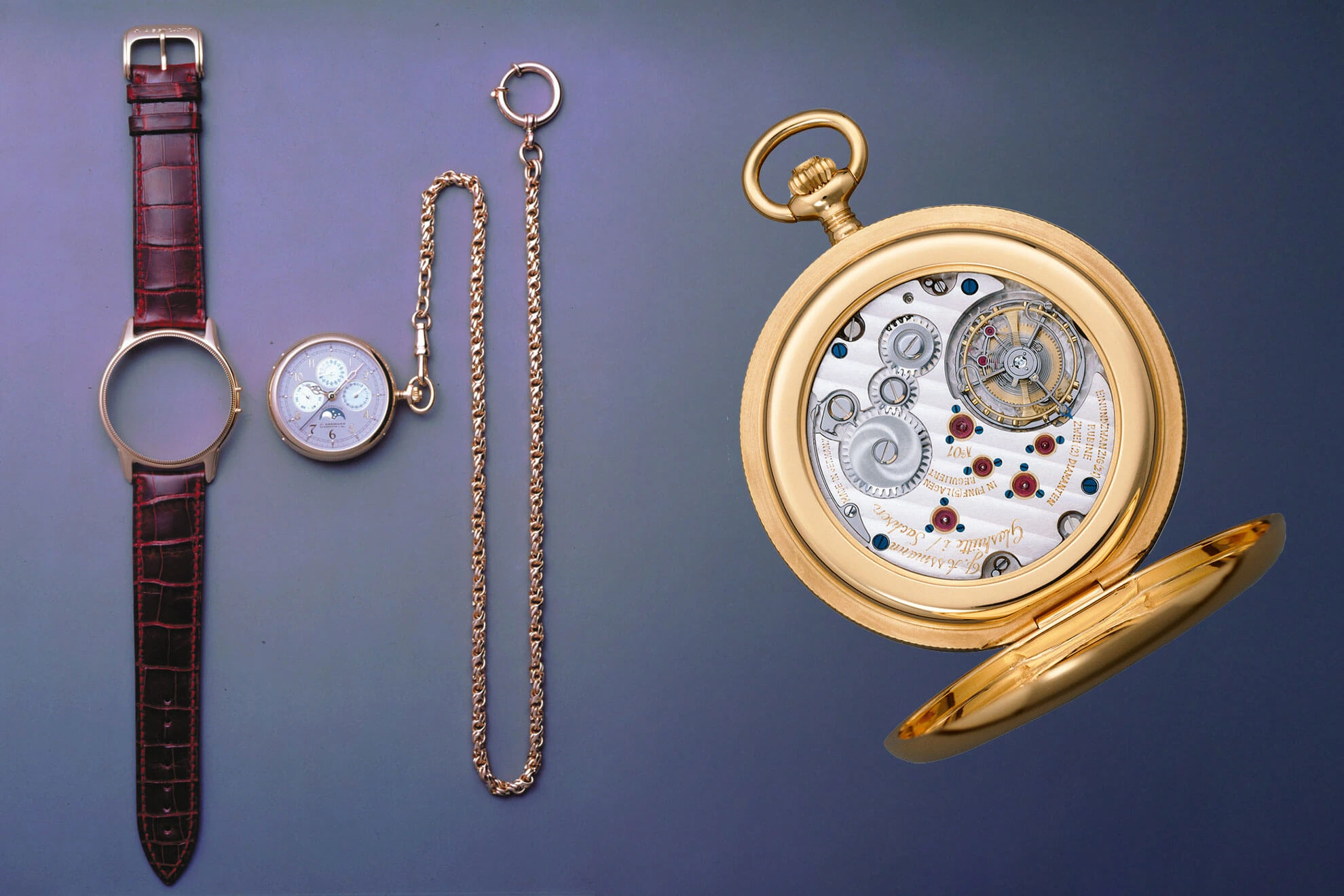
Julius Assmann pocket watch
But how exactly does the moonphase display from Glashütte Original work? A glance through the curved dial opening reveals two moons on the moonphase disc – a construction whose purpose may not be immediately obvious. The solution lies in the length of a lunar cycle: as we remember, one such cycle lasts around 29.5 days. However, since mechanical movements work most precisely with even numbers, watchmakers have opted for the most common method of multiplying this number by two to obtain an even 59 days. This double representation makes it possible to adapt the movement of the moonphase disc to the course of the day (24 hours) by having the disc make a complete revolution every 59 days.
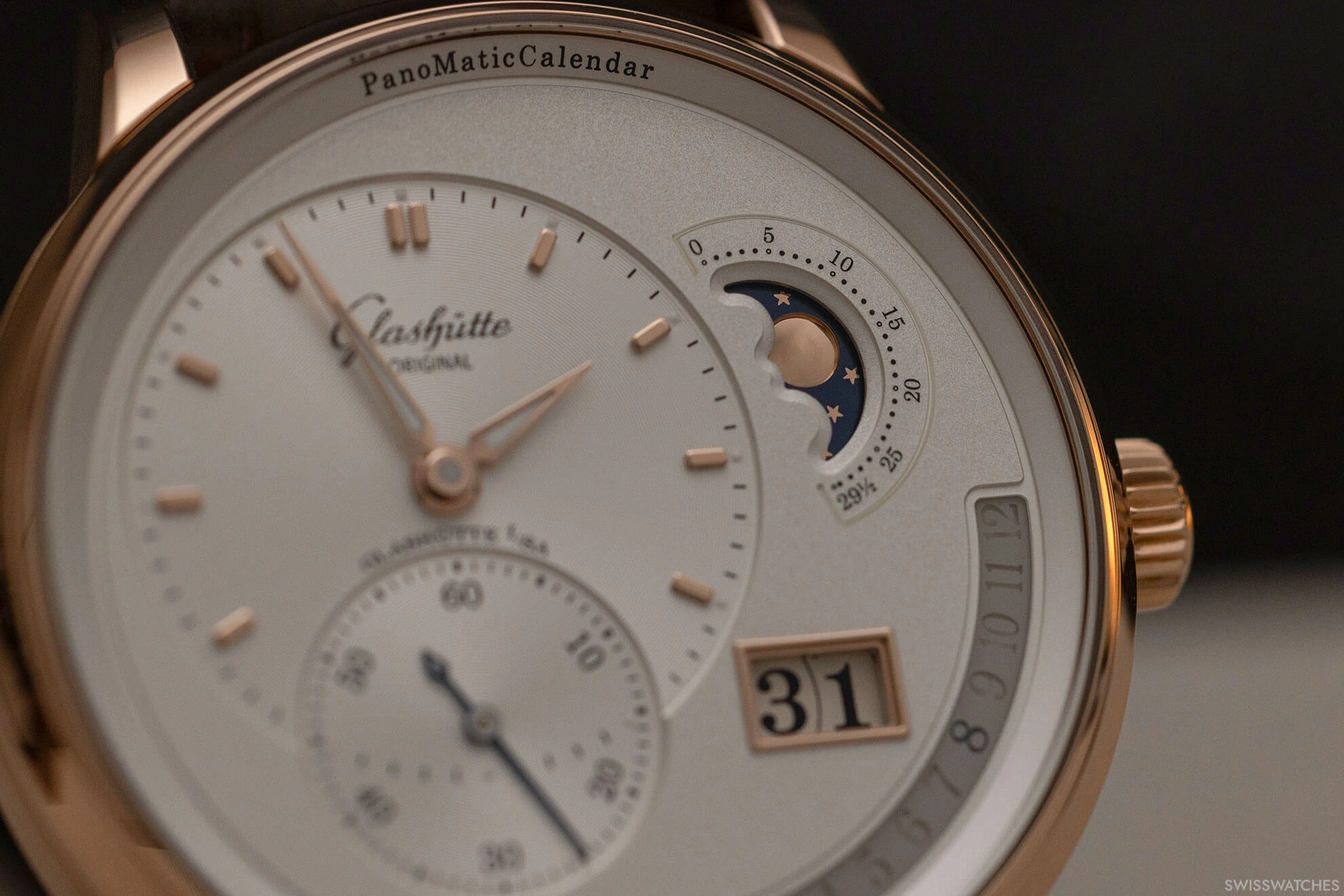
This has the practical advantage that the disc can be linked to the date mechanism of the watch. When the date is advanced by one day, the moonphase is automatically adjusted accordingly. The starting point for this mechanism at Glashütte Original is the hour wheel, which engages with the date mechanism using a so-called switching finger to advance it by one position. With each of these switching operations, the movement is also transferred to the moonphase disc and its 59 teeth via an intermediate wheel, causing it to rotate slightly further.
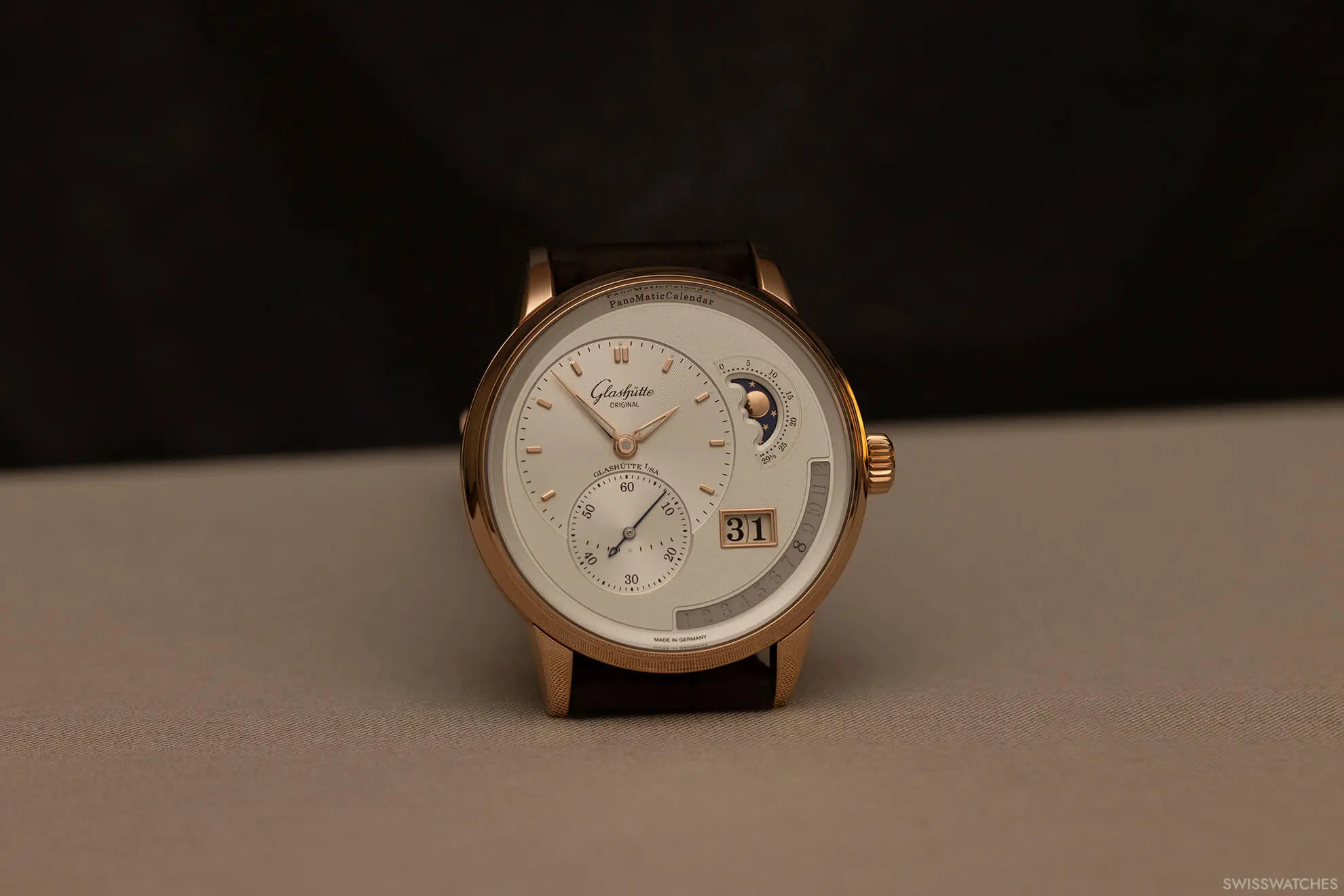
The two moons located on the moonphase disc ensure a smooth transition between the moonphases: while one moon disappears from the viewing window, the other enters at the same time. The moonphase on the dial shows how the moon appears when viewed from the earth – from the new moon phase to the full moon phase and back to the new moon phase. The visible part of the moon changes gradually: first you see a crescent, then a full moon, and then it decreases again until it disappears.
The most beautiful Glashütte Original moonphases
PanoMaticLunar
The PanoMaticLunar, which first came onto the scene back in 2003, is particularly impressive due to the decentralised arrangement of the hour and minute hands, earning it an international reputation as the ‘German watch face’. With its unusual yet aesthetic design, the PanoMaticLunar and the PanoReserve form the centrepieces of the Pano collection, which was redesigned in 2012.

It therefore only takes a glance at the PanoMaticLunar models, which are currently available in pink gold and steel case versions, to recognise the characteristic decentralised displays in their clearly thought-out arrangement. The hours, minutes and small seconds are located on a vertical axis in the left-hand half of the dial, while the Panorama Date and moonphase display are positioned at the bottom right and top right respectively. The automatic movement 90-02, which is located inside the PanoMaticLunar and has a power reserve of 42 hours, is manufactured in-house with the utmost care, as are all the other movements.
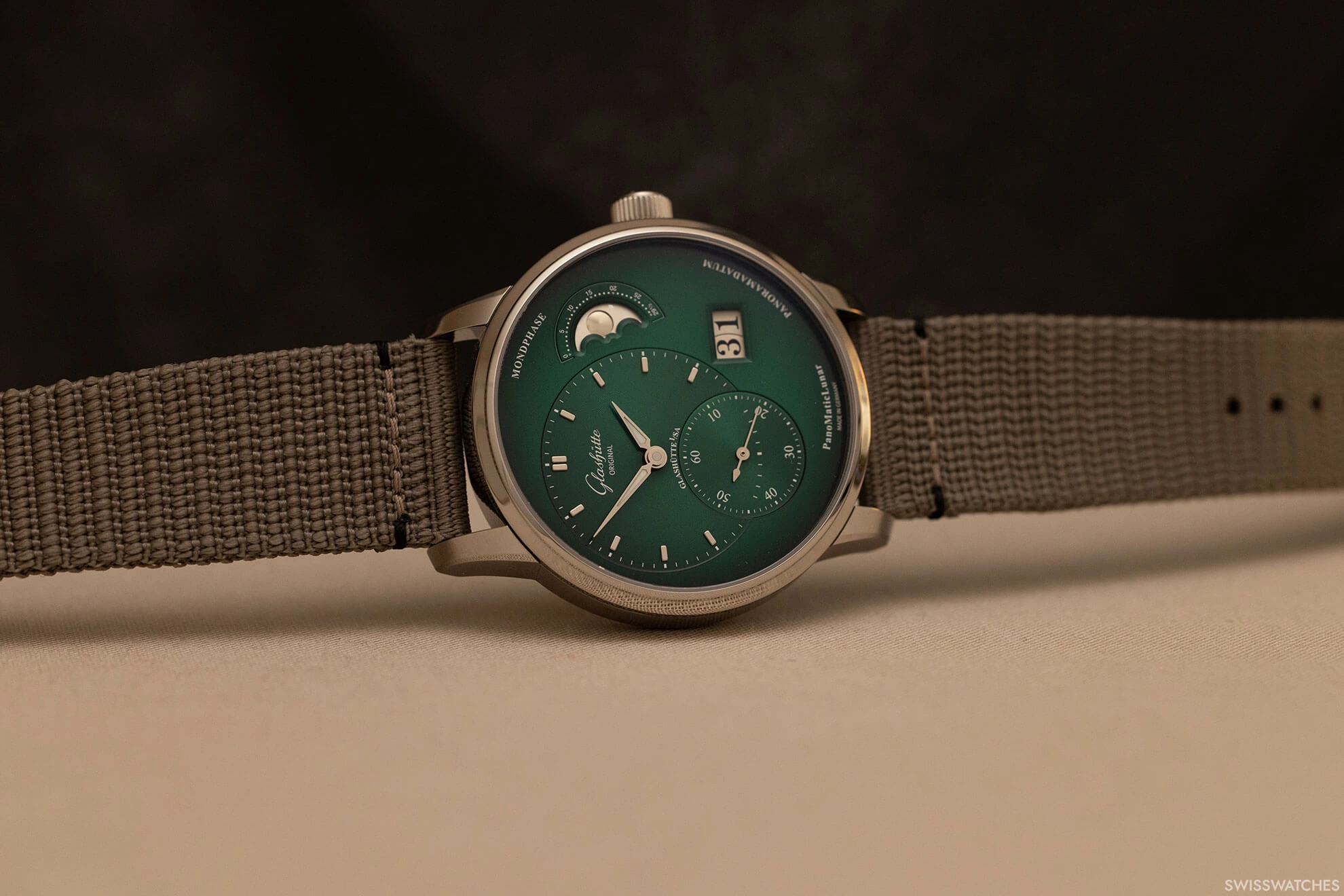

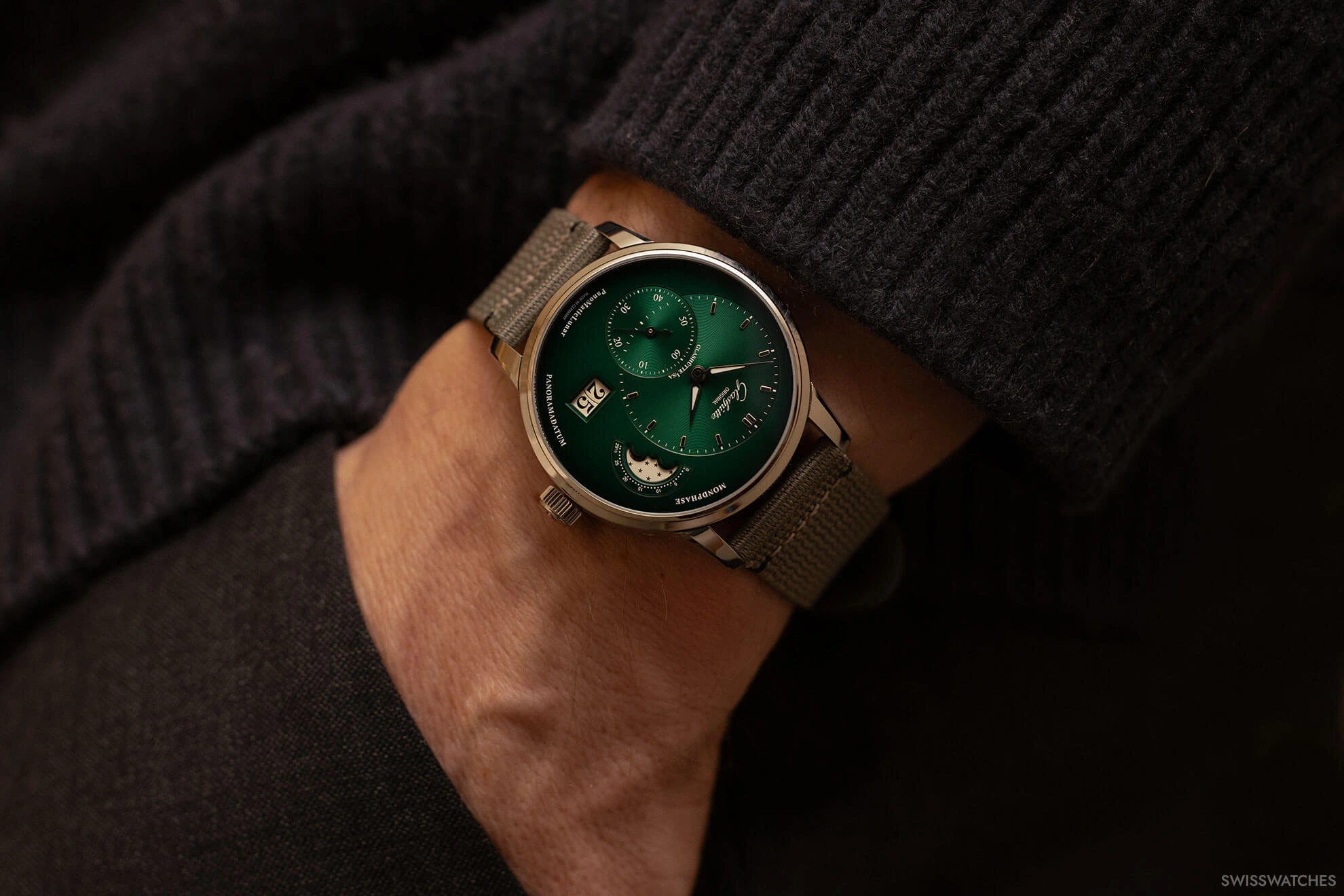
PanoLunarInverse: The first Inverse with moonphase
According to the company’s own book ‘Impressions’, the idea for the PanoInverse collection was born out of a casual conversation between a sales representative and a colleague from product development along with the desires of several customers, who regretted that they could not admire the beauty of the movements while reading the time. In order to make this possible, Glashütte Original reversed the design of its Pano watch in an elaborate new development. In 2008, the first PanoInverse appeared, presenting a dial that combined the most obvious elements of the movement – the blued screws, jewels, numerous decorations and the balance wheel – with the time display.
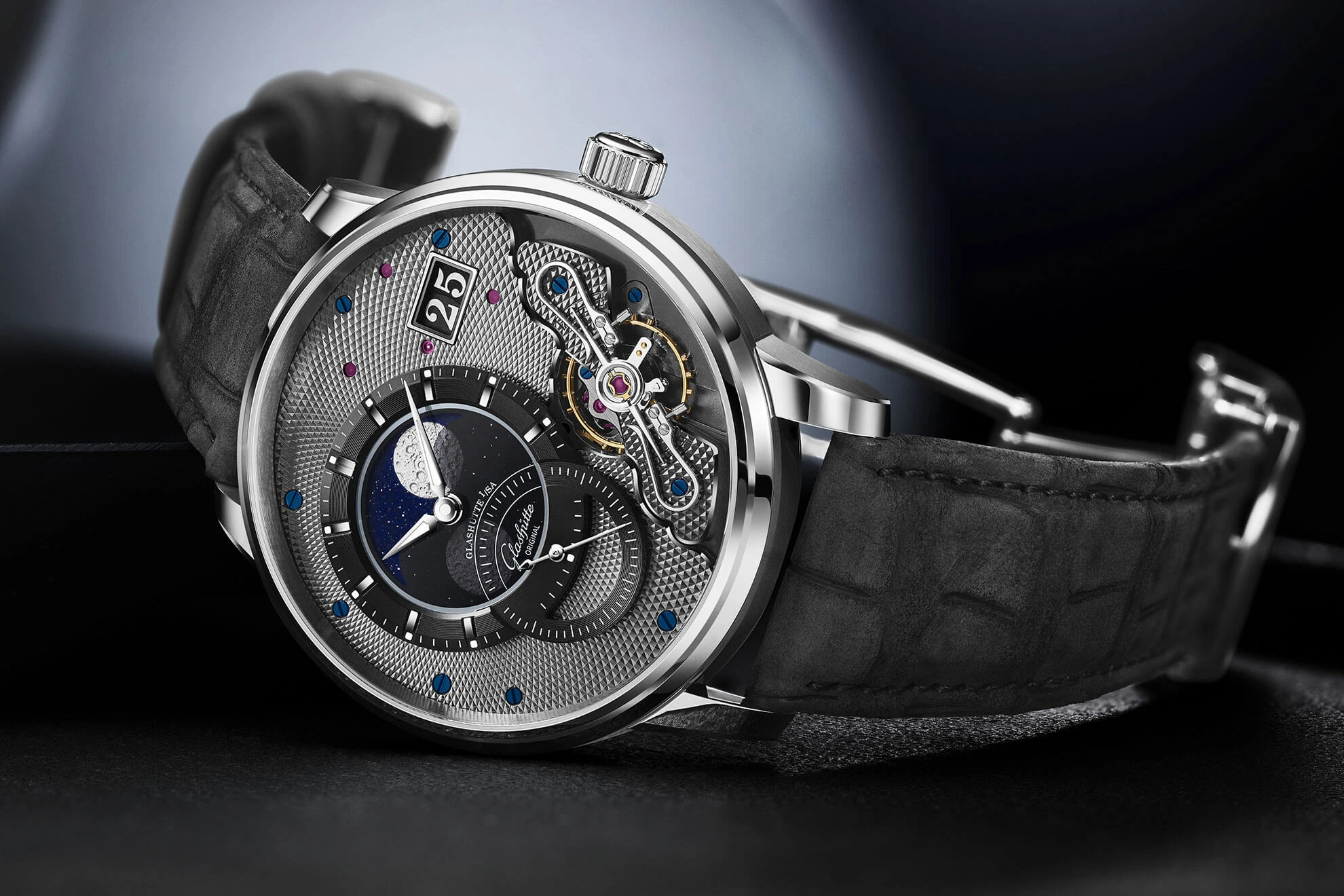
16 years later, in 2024, the PanoLunarInverse, limited to 200 pieces, was added to the product portfolio. As part of the brand’s most characteristic collection, it combines perhaps the most poetic complication: the moonphase display.
The moonphase display of the PanoLunarInverse
As part of the Inverse line, Glashütte Original adds its balance and black rhodium-plated guilloché decoration to the front of the PanoLunarInverse, as well as the date window in white gold and, of course, the hands. This time, however, the off-centre hour and minute display is joined for the first time by a moon phase display. The centrepiece is therefore a moon sculpted in relief, its surface laser-engraved to depict the craters and mountains of the Earth’s satellite. This rises in front of a firmament of aventurine. Once the moon has passed through the dial section, it continues its path under a dial made of grey-blue sapphire crystal, while the two circular shapes of the moon disc are always visible.
If you turn the watch over, you can see that the brand has given the PanoLunarInverse a third moon. This can be found on the skeletonised rotor, which winds the calibre 91-04 with a frequency of 28,800 vibrations per hour (4 Hz) and offers a power reserve of up to 45 hours. What is special about the brand’s watches and movements is that they have a production depth of 95 percent, which is unrivalled in Germany. As a fully integrated manufacture, Glashütte Original produces everything under its own roof, from the smallest screw to the complicated tourbillon and perpetual calendar, even manufacturing the associated tools in its own in-house toolmaking department. The result is that almost the entire process of creating their watches is part of their core expertise.
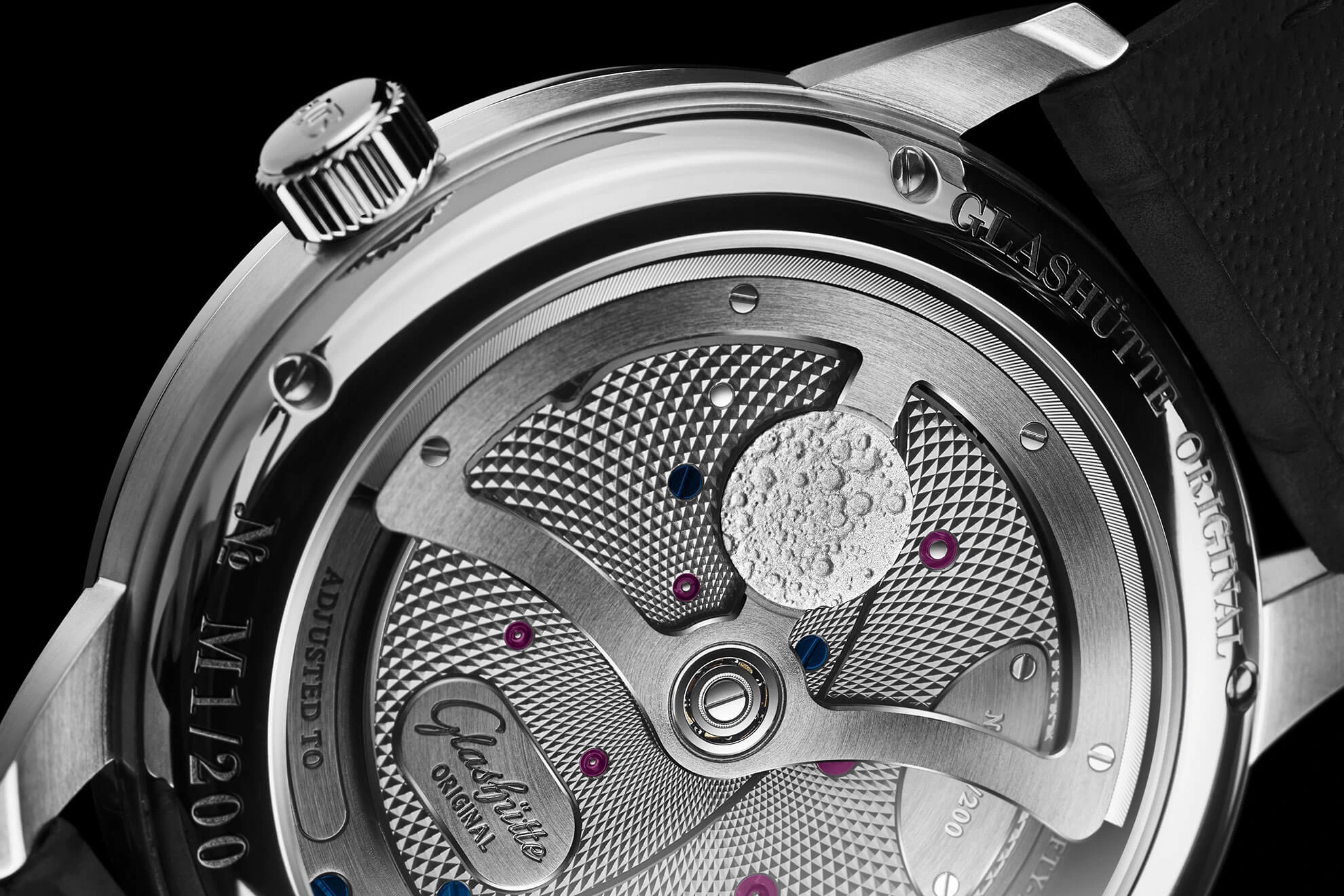
PanoMaticCalendar
In 2022, the launch of the new calibre 92 led to the introduction of two new watches with a moonphase display that could not be more different. Glashütte Original contrasted the elegant PanoMaticCalendar version with a pink-gold case and silver opaline dial with a special platinum edition limited to 150 pieces. This special edition impressed the brand’s followers with a skeletonised dial that reveals the month wheel below the small seconds dial and the moonphase mechanism. The date discs, which are also visible through the open construction, are accompanied by a sapphire crystal window between 3 and 6 o’clock, which displays the twelve months in white numerals.
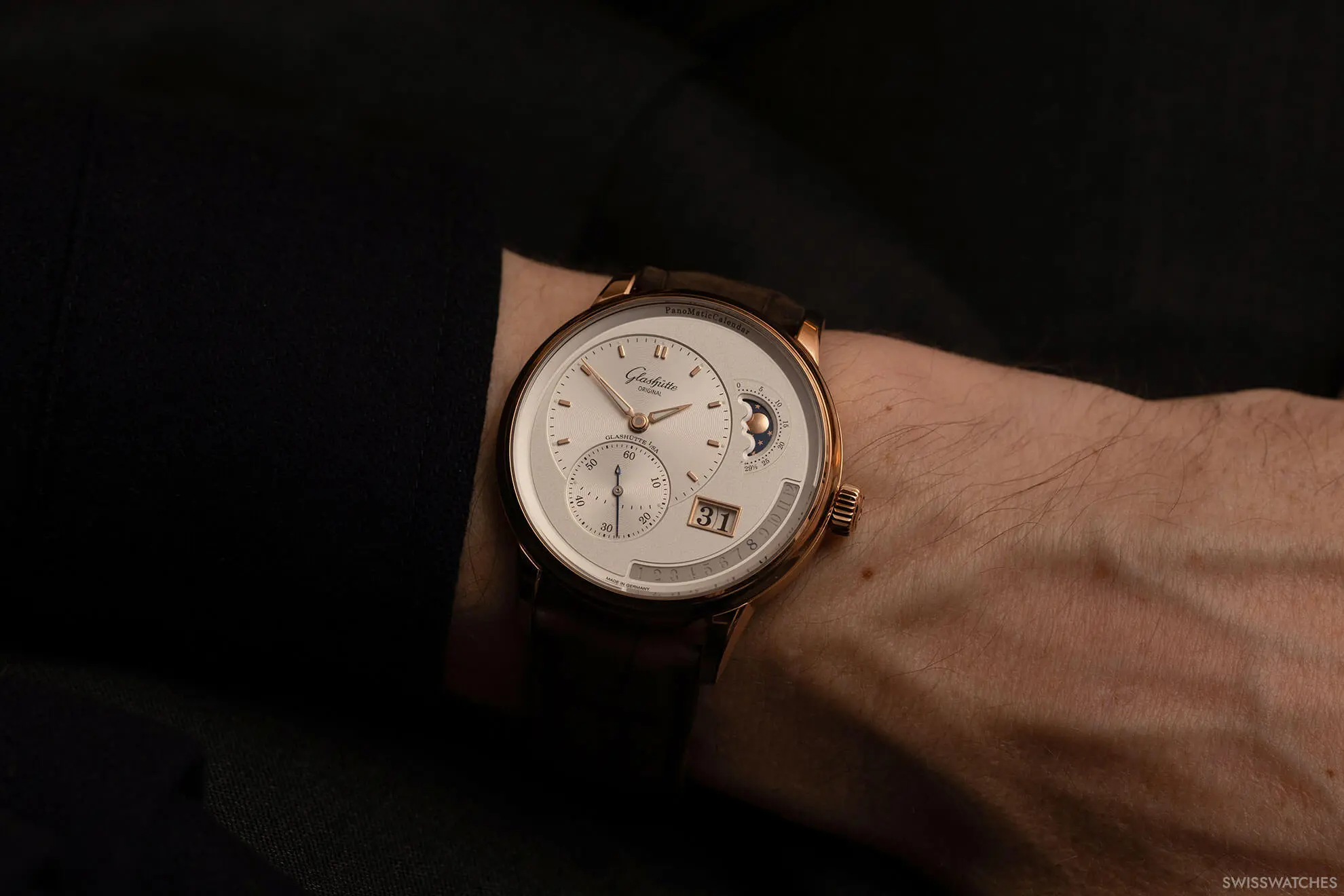
While the Earth’s satellite at 2 o’clock is colour-coordinated with the case in the pink-gold version, it stands out against the dark firmament with a silver shimmer in the platinum version. The moonphase is theoretically displayed accurately for 122 years and only needs to be corrected by one day after this time has elapsed. It is set using a discreet corrector on the edge of the case.
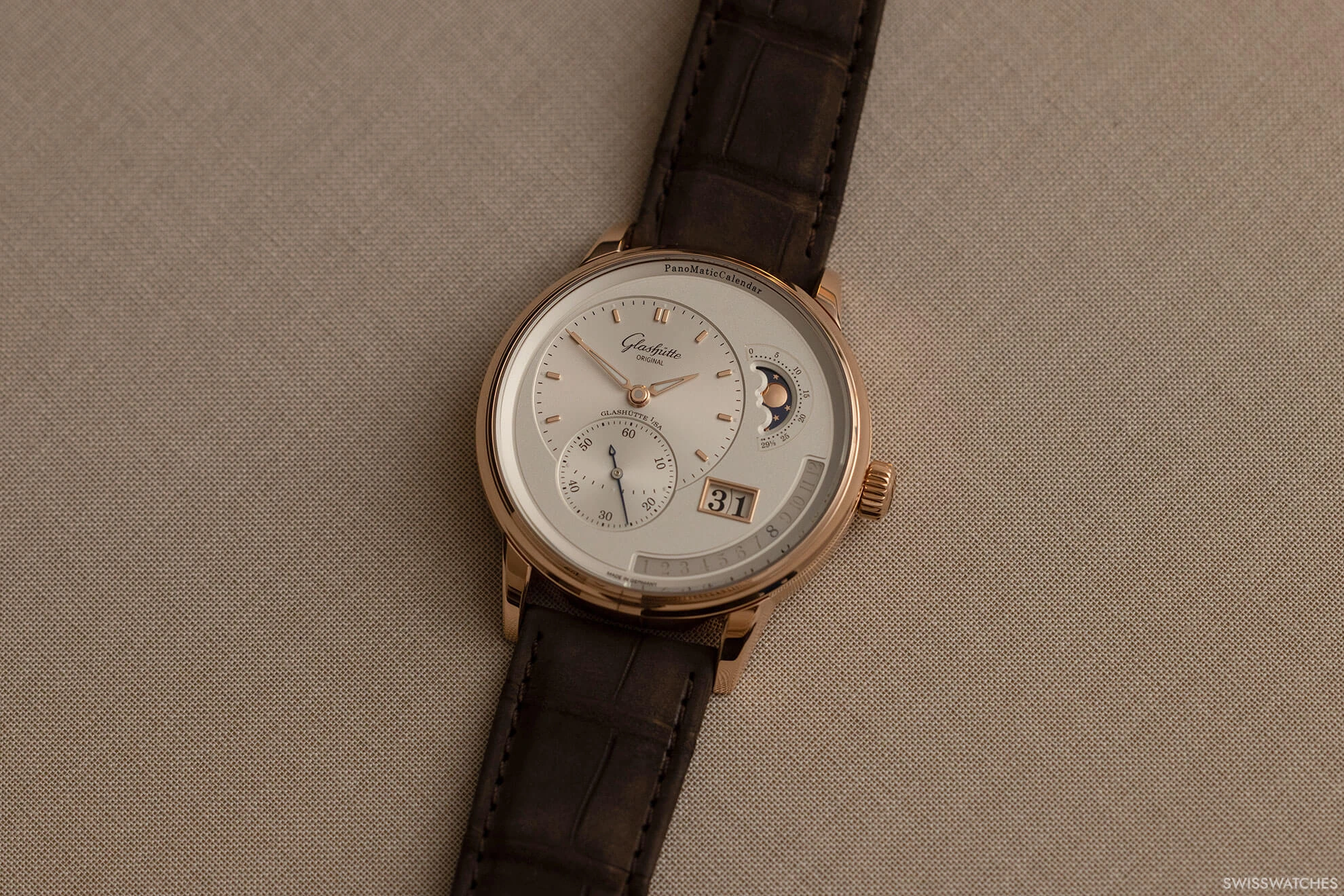
This was made possible by the then newly developed calibre 92 with an annual calendar, which was attached to the case with a bayonet suspension, ensuring shock resistance. Developed at the end of the 20th century and therefore a comparatively young complication, the annual calendar displays the day and month, taking into account the months with 30 and 31 days. Its date only needs to be corrected once a year, on 1 March. This distinguishes the annual calendar from its big brother, the perpetual calendar, which takes into account the short month of February even in leap years.


The moonphase in the Senator collection
The Senator Excellence Perpetual Calendar and Panorama Date Moonphase
As the highlight of the Senator Excellence collection launched in 2016, the Senator Excellence Perpetual Calendar, first presented in 2017, embodies the art of watchmaking, which is transferred to the dial through the complex mechanism of the perpetual calendar, slender hands and Roman numerals. The dial of the versions updated in 2023, which is presented in a galvanic silver or galvanic grey colour depending on the pink gold or steel case version, features the following elements: a month display at 2 o’clock, a dial cut-out at 4 o’clock that frames the Panorama Date, a weekday display at 10 o’clock and, of course, the moonphase, which rotates behind a curved dial opening.
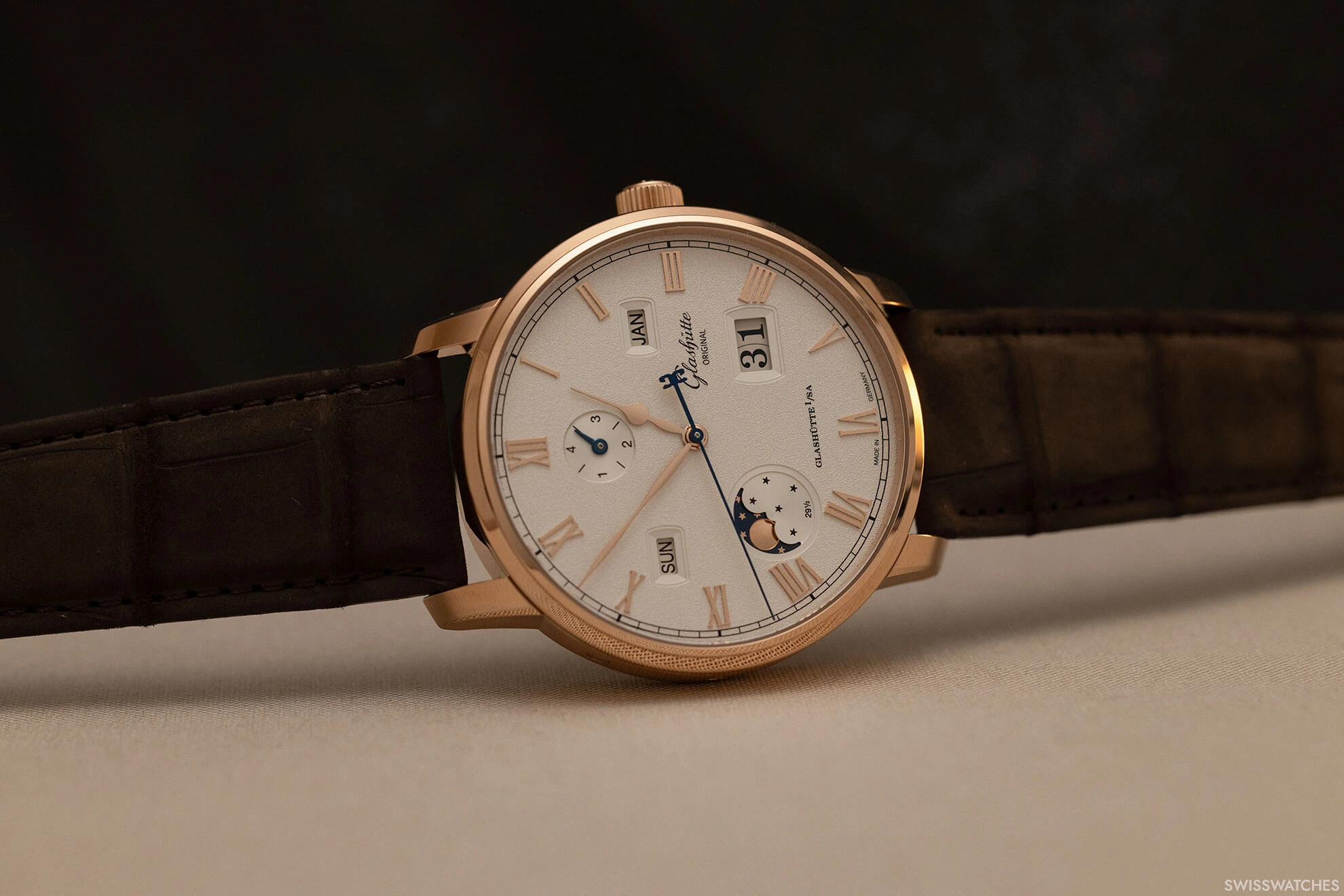
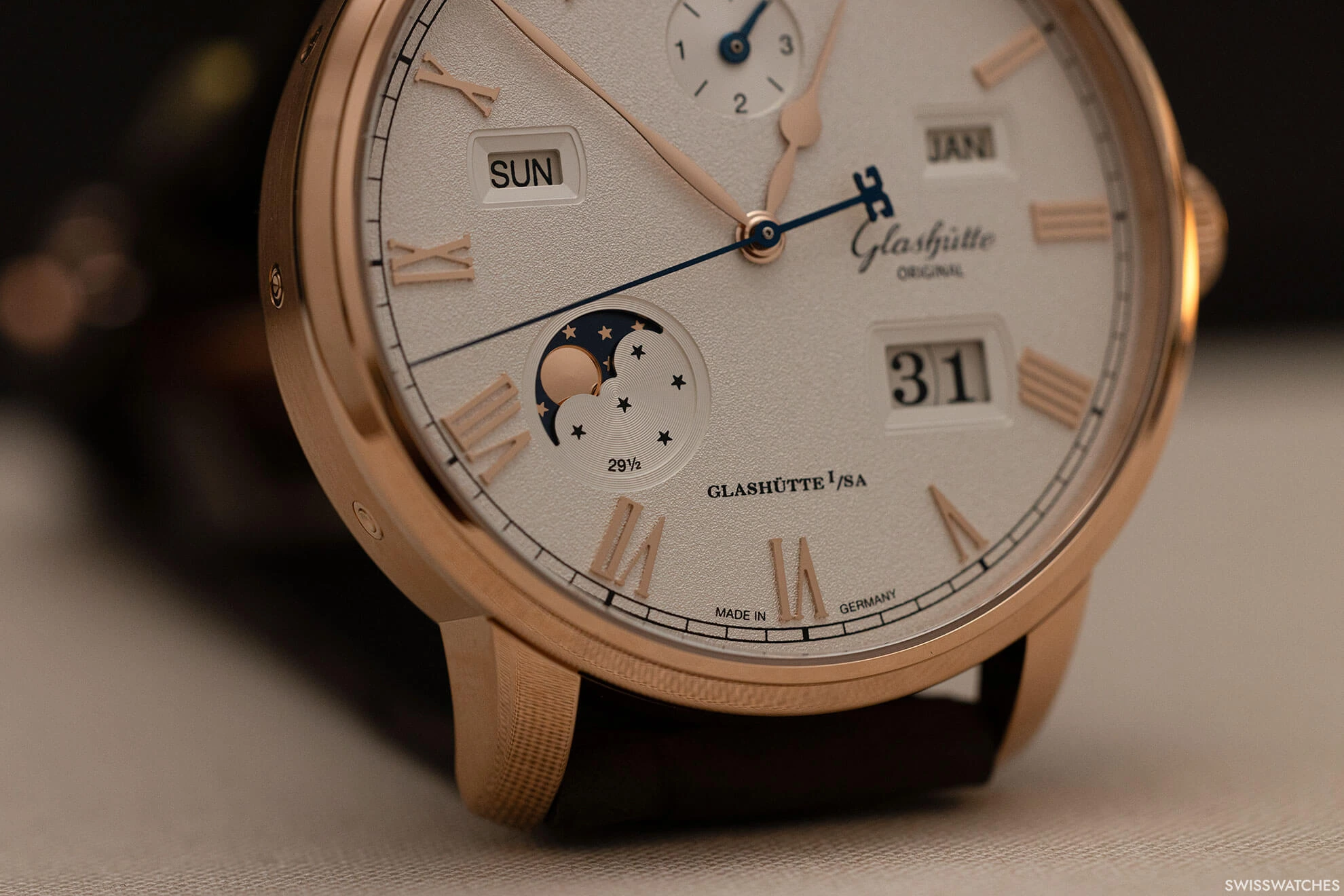
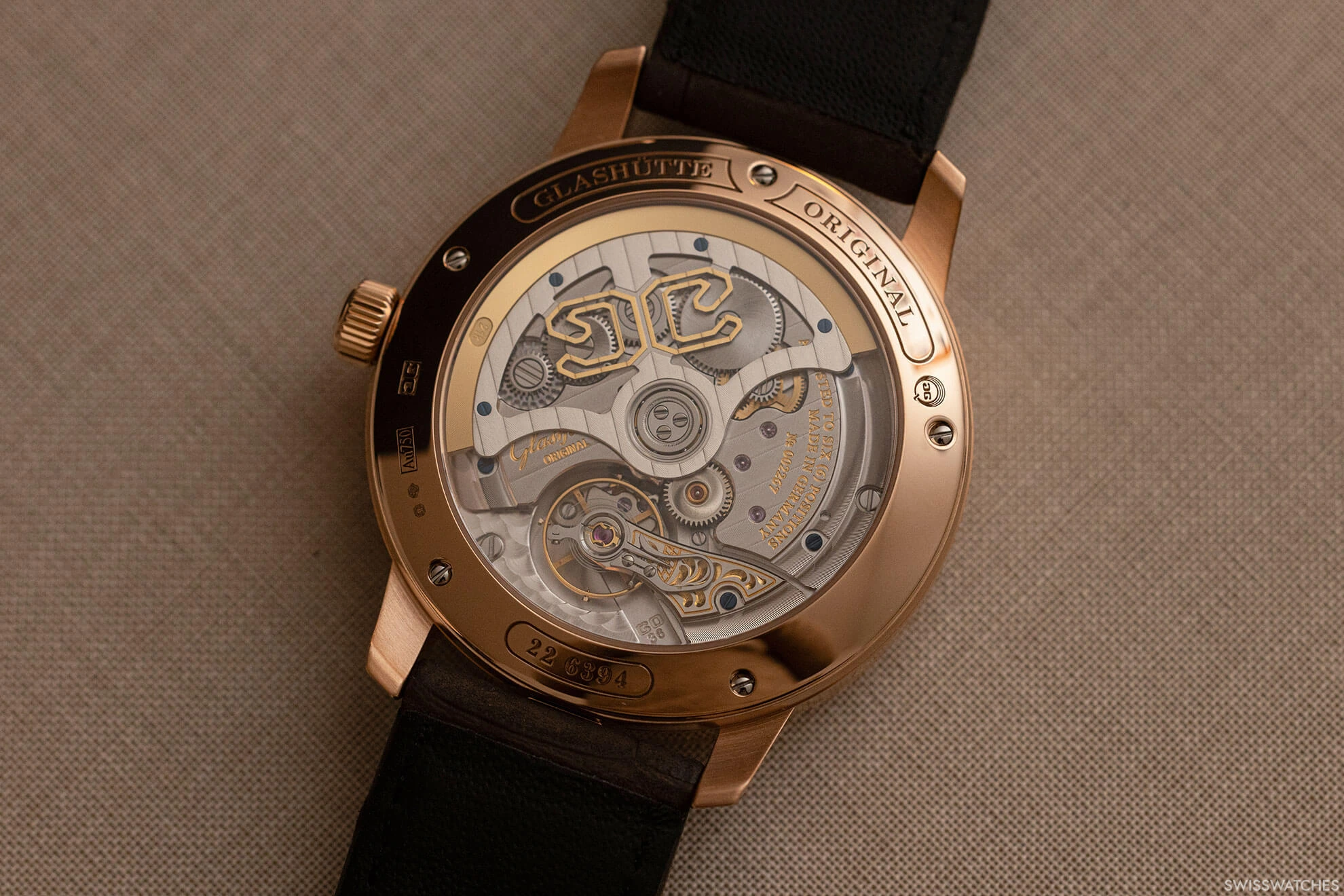
However, it was not just two new versions of the perpetual calendar that found their way into the Senator Excellence collection in 2023. The Excellence collection also saw the addition of two models that combine the Panorama Date, which is so important to the brand, with the moon phase: the Senator Excellence Panorama Date Moon Phase.
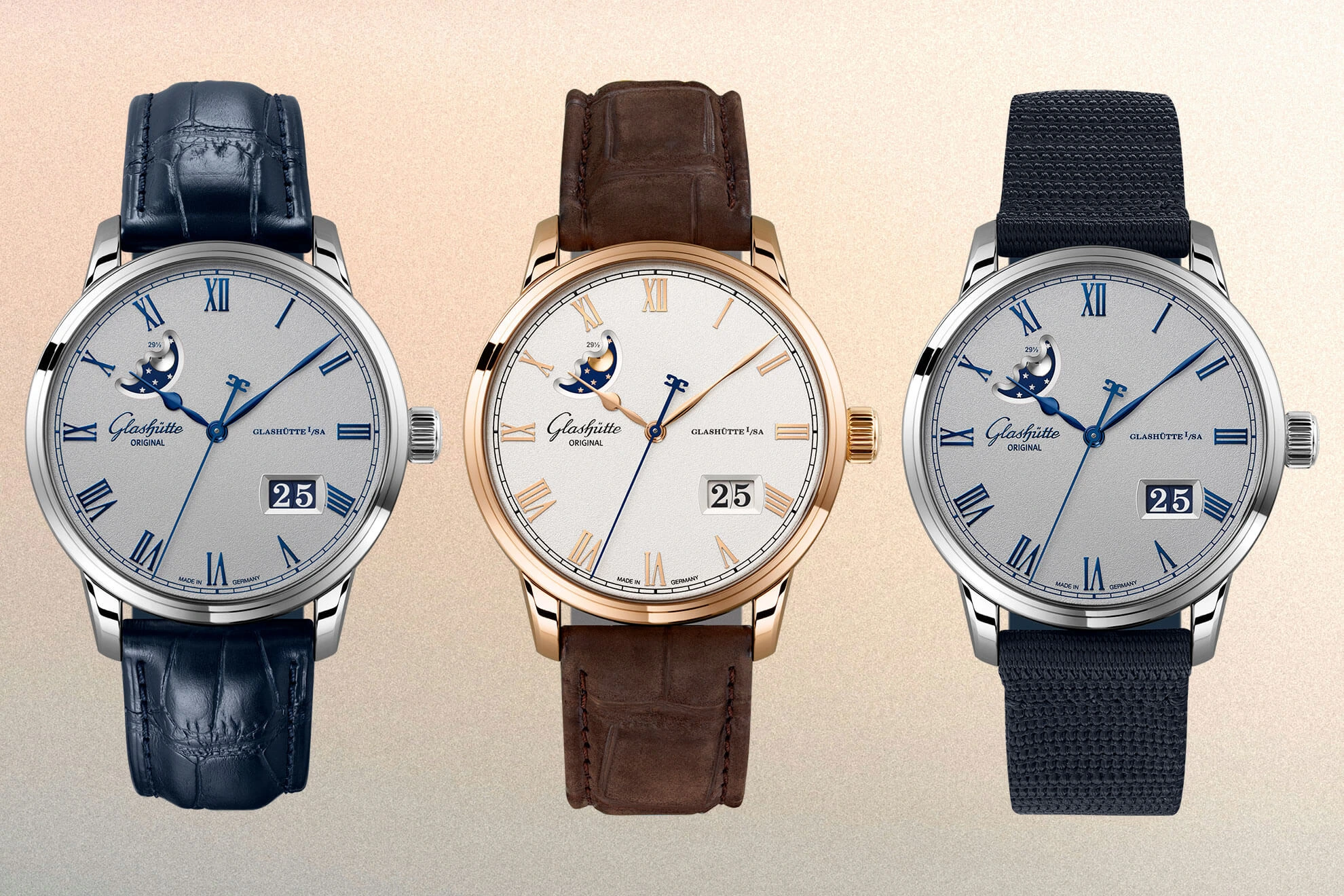
The heart of the Senator Excellence models is based on the latest developments of the tried and tested calibre 36. The perpetual calendar is powered by calibre 36-12, which enables the precise display of the date, day of the week and month and even takes leap years into account – without manual correction over a period of one hundred years. By contrast, the calibre 36-24 is used in the models with Panorama Date and moonphase. Both movements not only impress with a power reserve of 100 hours, but also with their elaborate finishes, which are visible through the open sapphire crystal caseback. These finishes include the traditional Glashütte three-quarter plate with its characteristic gold chatons, the swan-neck fine adjustment, and other elaborately decorated movement parts such as the hand-engraved bridges and balance cocks.
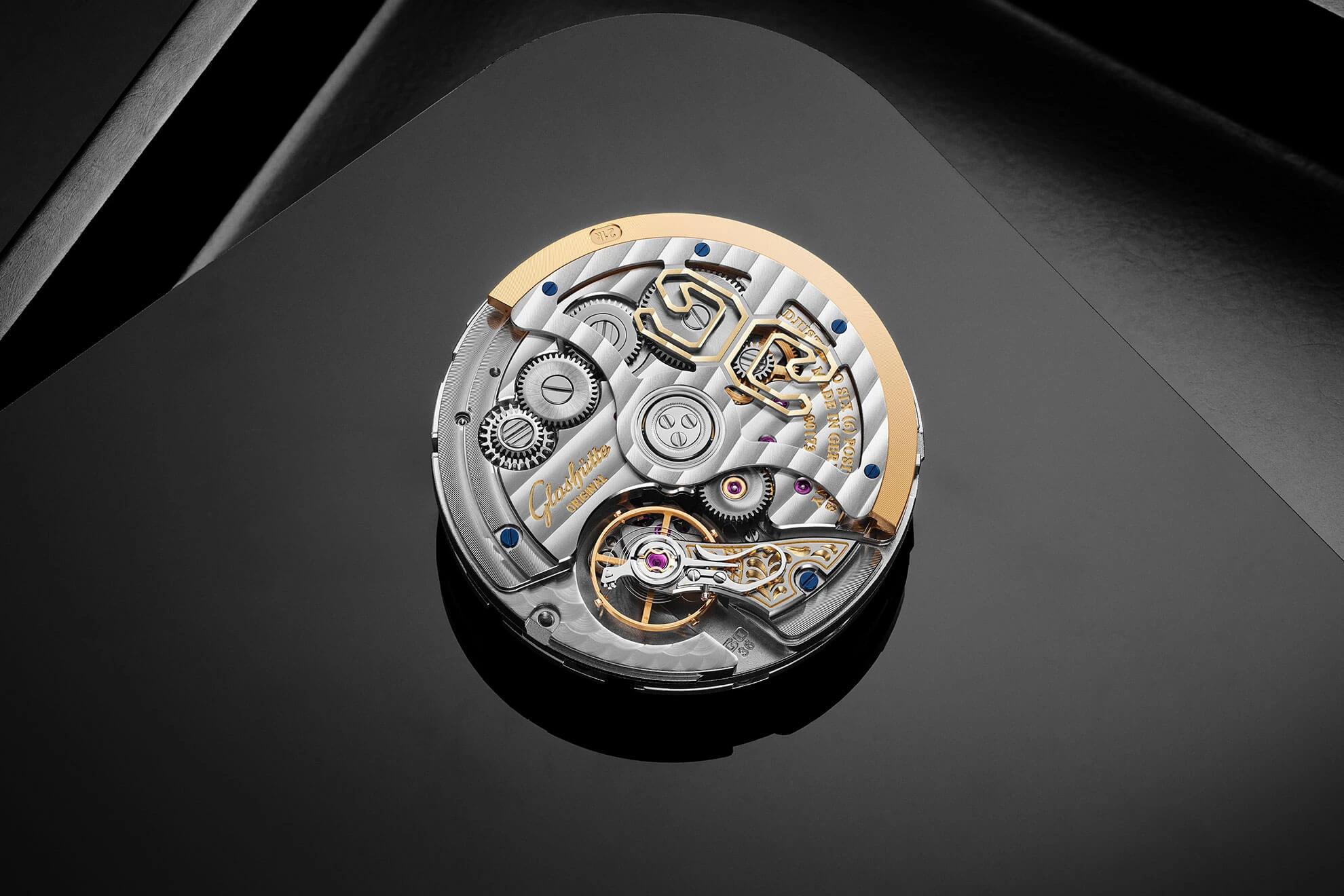
The moonphase in the ladies’ collection
As one of the most aesthetically pleasing complications in watchmaking, serving aesthetics and functionality in equal measure, the moonphase display can also be found in the brand’s ladies’ watches. In 2024, Glashütte Original expanded its ladies’ collection to include the feminine Serenade Luna with moonphase display in four versions, all of which are powered by an automatic calibre specially developed for these models: the calibre 35. This means that, in addition to the PanoMaticLuna, there is now a second ladies’ model with moonphase display for women to choose from. All models of the new Serenade Luna have a round case with a diameter of 32.5 mm, which – in addition to two stainless steel models combined with a white mother-of-pearl dial – is also available in another stainless steel version with a blue dial and a pink gold version with a green dial. The diamond hour markers ensure the elegant appearance of the dial, as does the seconds hand, featuring a curved infinity mark – a stylistic element of the sister collection.
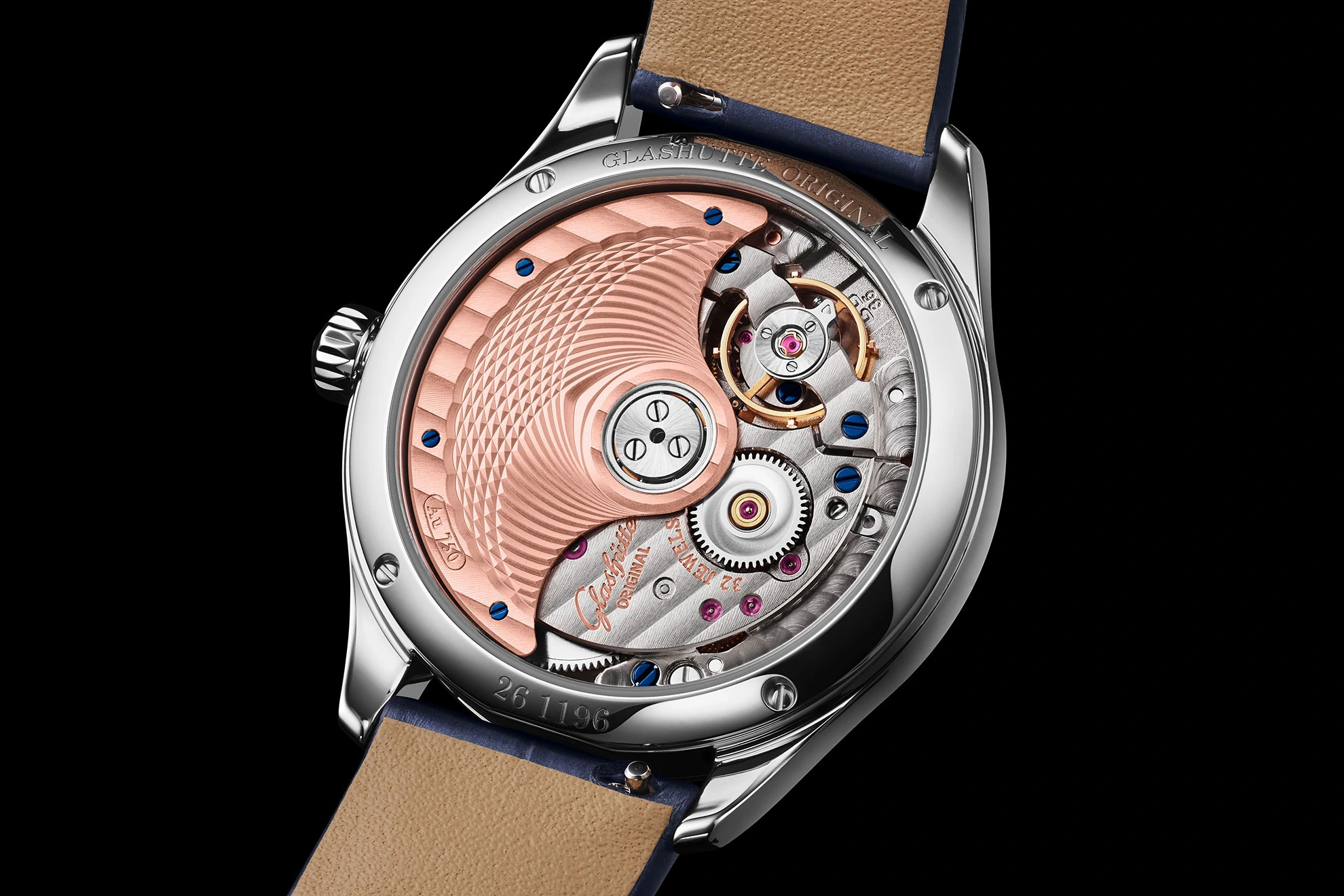
But the Serenade Luna has a decisive detail that sets it apart from other Glashütte Original watches with a moonphase display: hidden beneath the dial is a disc of mother-of-pearl with four circular night skies, on which the shape of the moon is formed by overlapping with the lunar window. This new design for the brand ensures a moonphase construction that is built up in width rather than height and is therefore more space-saving. This, in turn, sits on a movement with a height of 3.8 mm, which has a newly designed oscillating system with four regulating screws on the balance wheel, a magnetic field-resistant silicon balance spring and a power reserve of 60 hours.
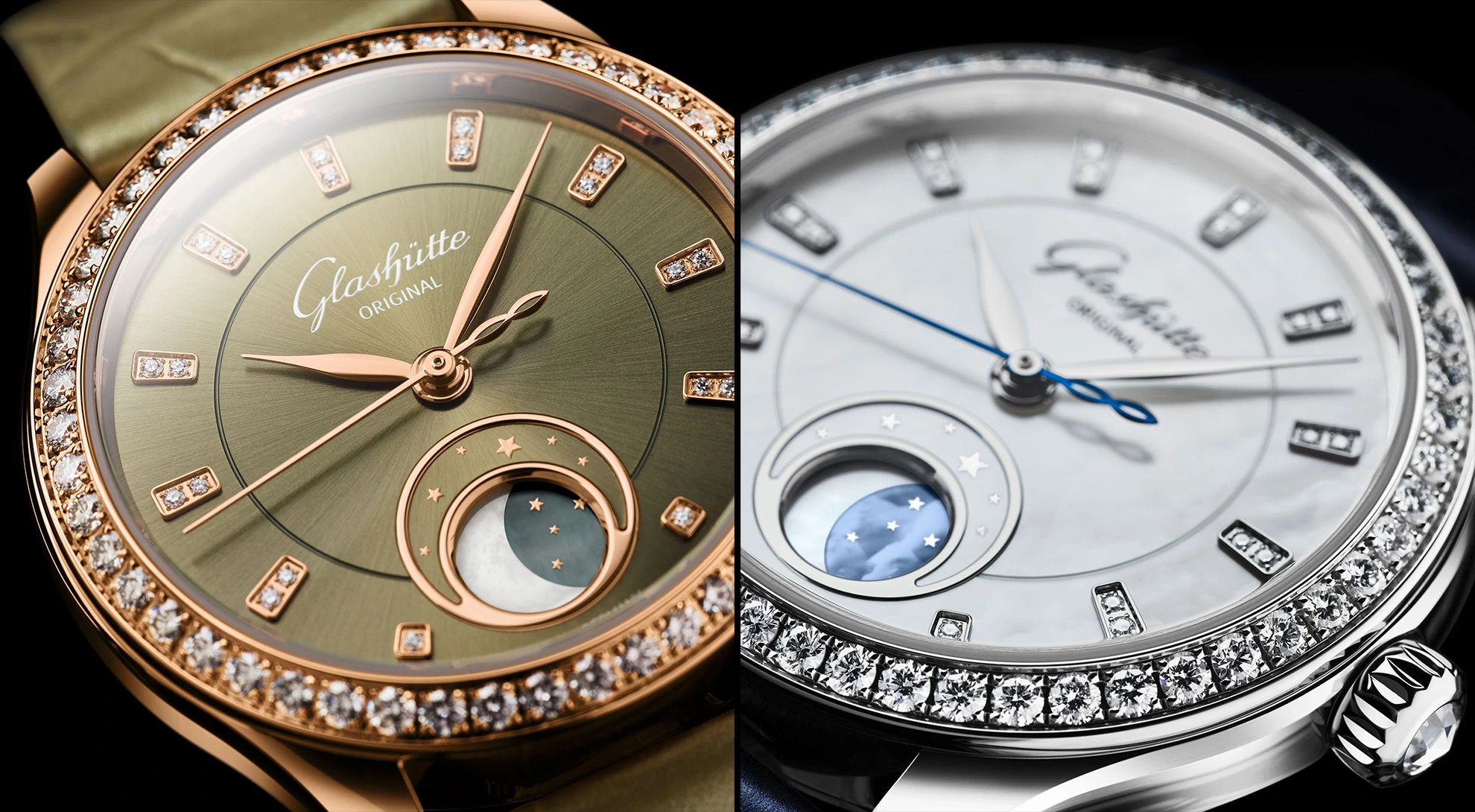
The sapphire crystal caseback reveals the golden rotor of the movement, which rotates above the automatic movement and is accompanied by a rotor plate, which is also made of gold. Behind the rotor, the refined movement can be admired: including the three-quarter plate, the wheel bridge with stripe finish and the reduction wheel with sunburst finish.
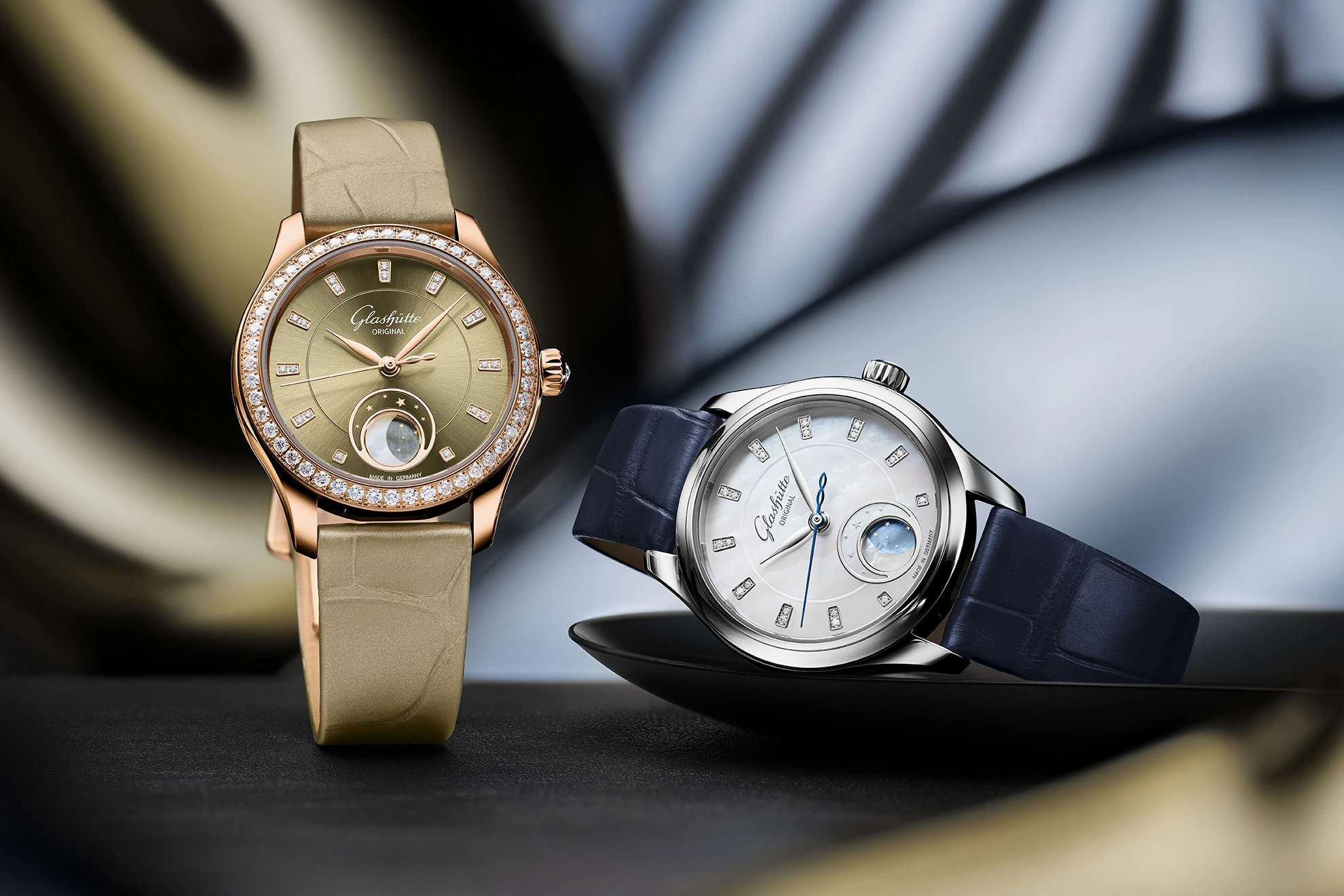
Producing a moonphase
After looking at the technical details and the variety of models with a moonphase display, the final step takes us into the workshops of Glashütte Original and to the question of how the miniaturised representations of the moon are created. The path to the finished moonphase display begins in Glashütte Original’s in-house dial manufacture.


The starting point for every moonphase display is a brass disc that has already been toothed and is finished in different ways depending on the model. Depending on the design, the moon is cut out and polished to a high gloss, the rest of the disc is lacquered or covered with mother-of-pearl. Particularly elaborate versions are made entirely of mother-of-pearl or are also laser-engraved.
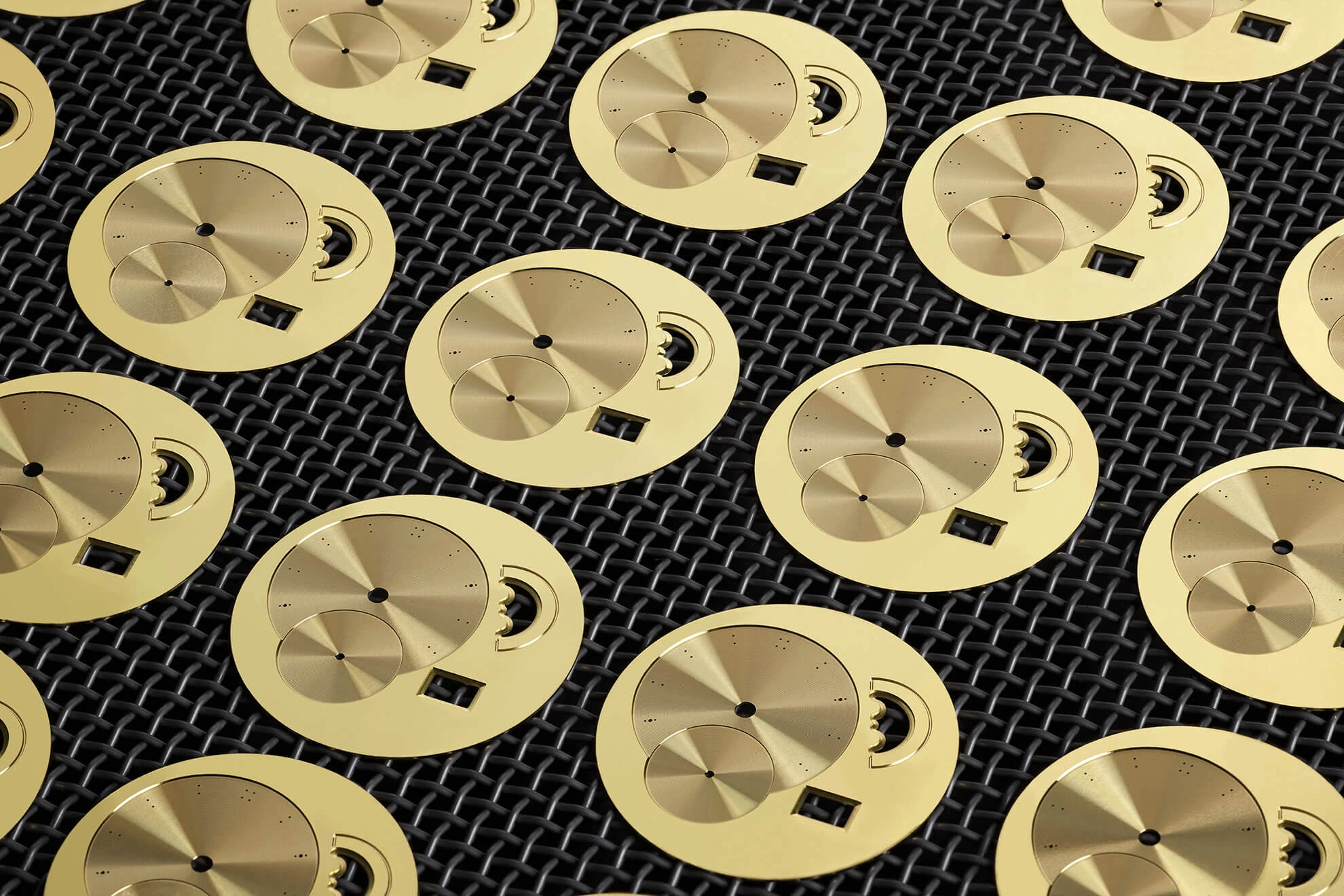
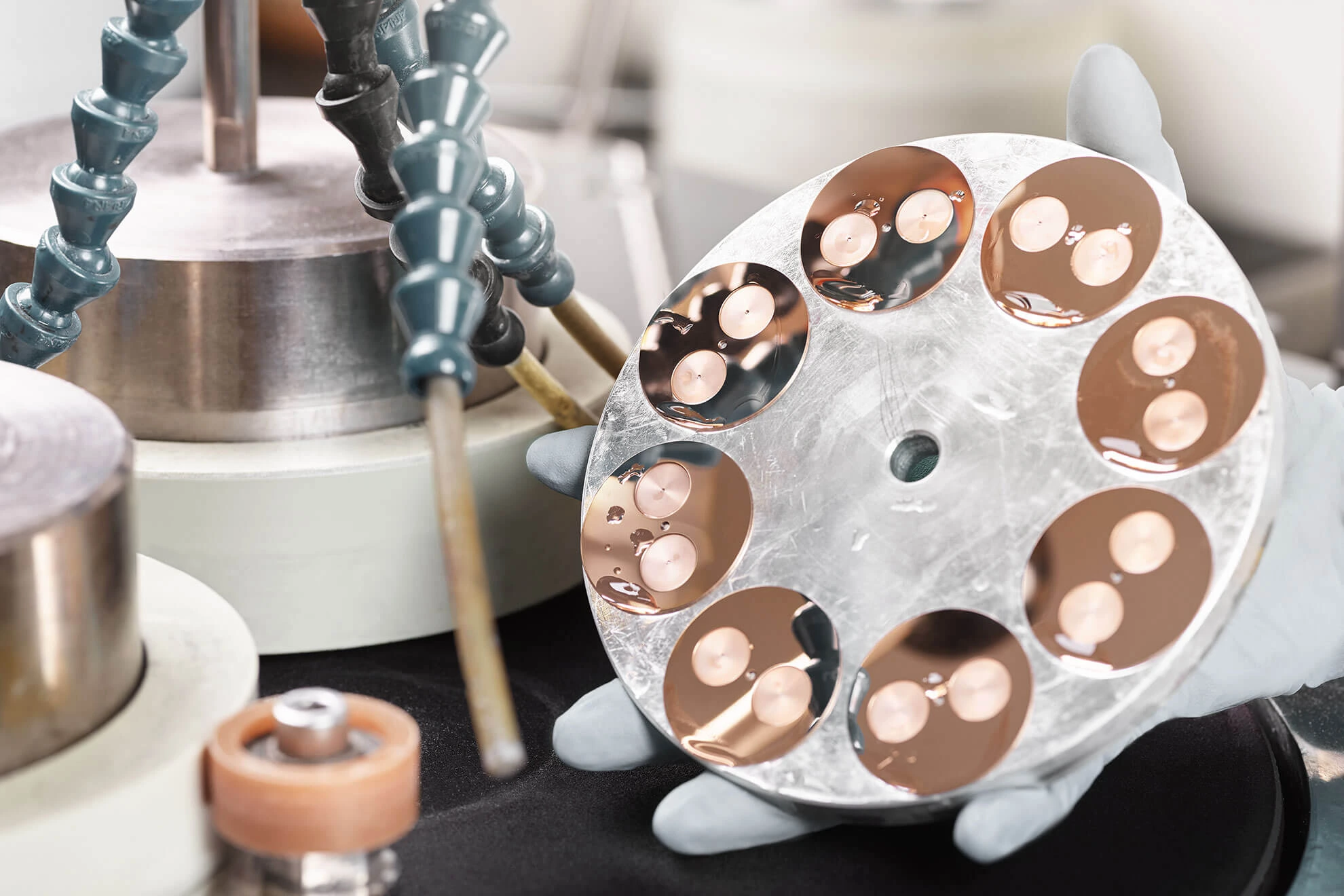
But all moonphase displays have one thing in common: regardless of the choice of material, their production requires numerous work steps in which the raw material is refined into a unique display disc by the hands of experienced craftsmen.

